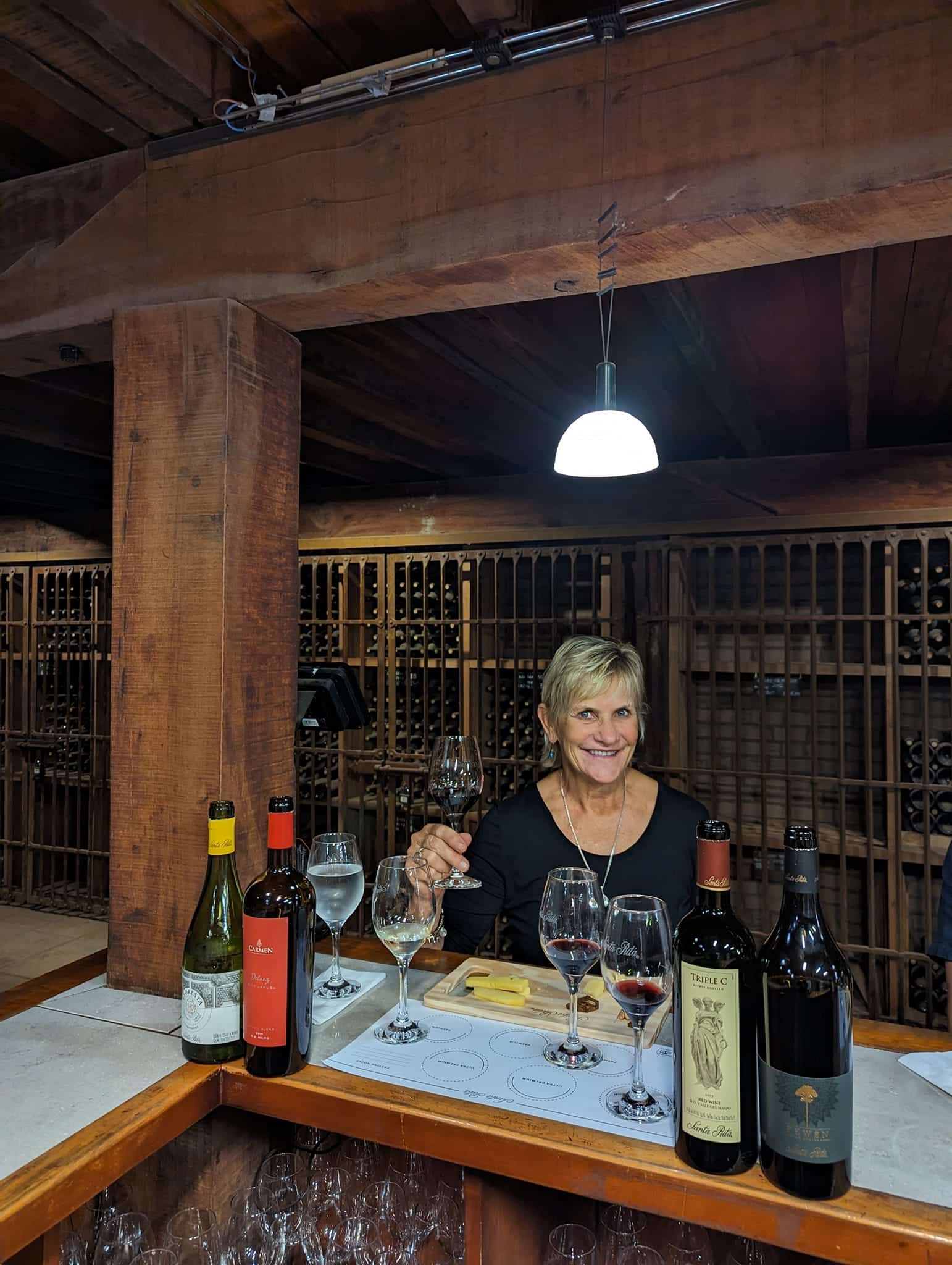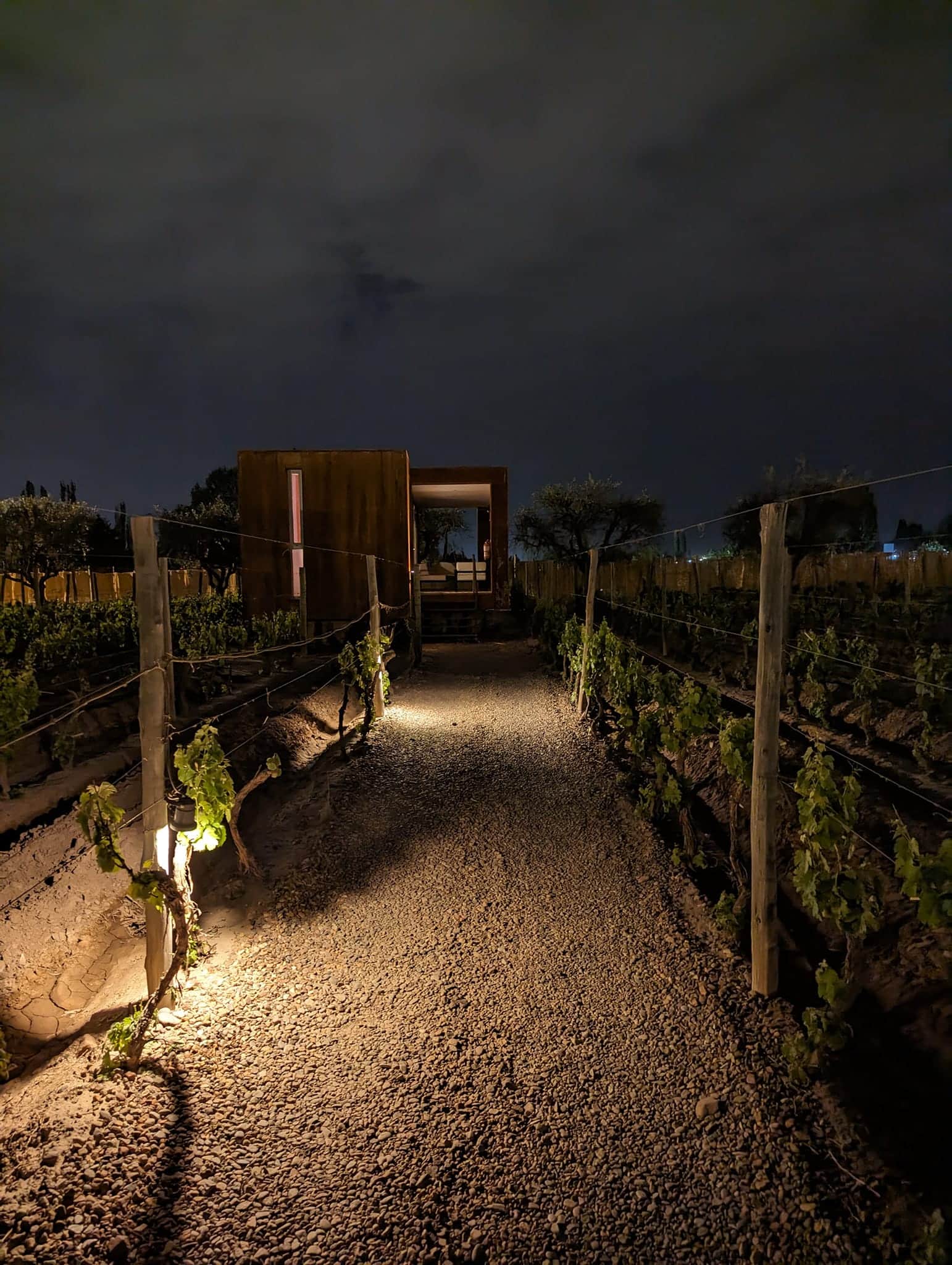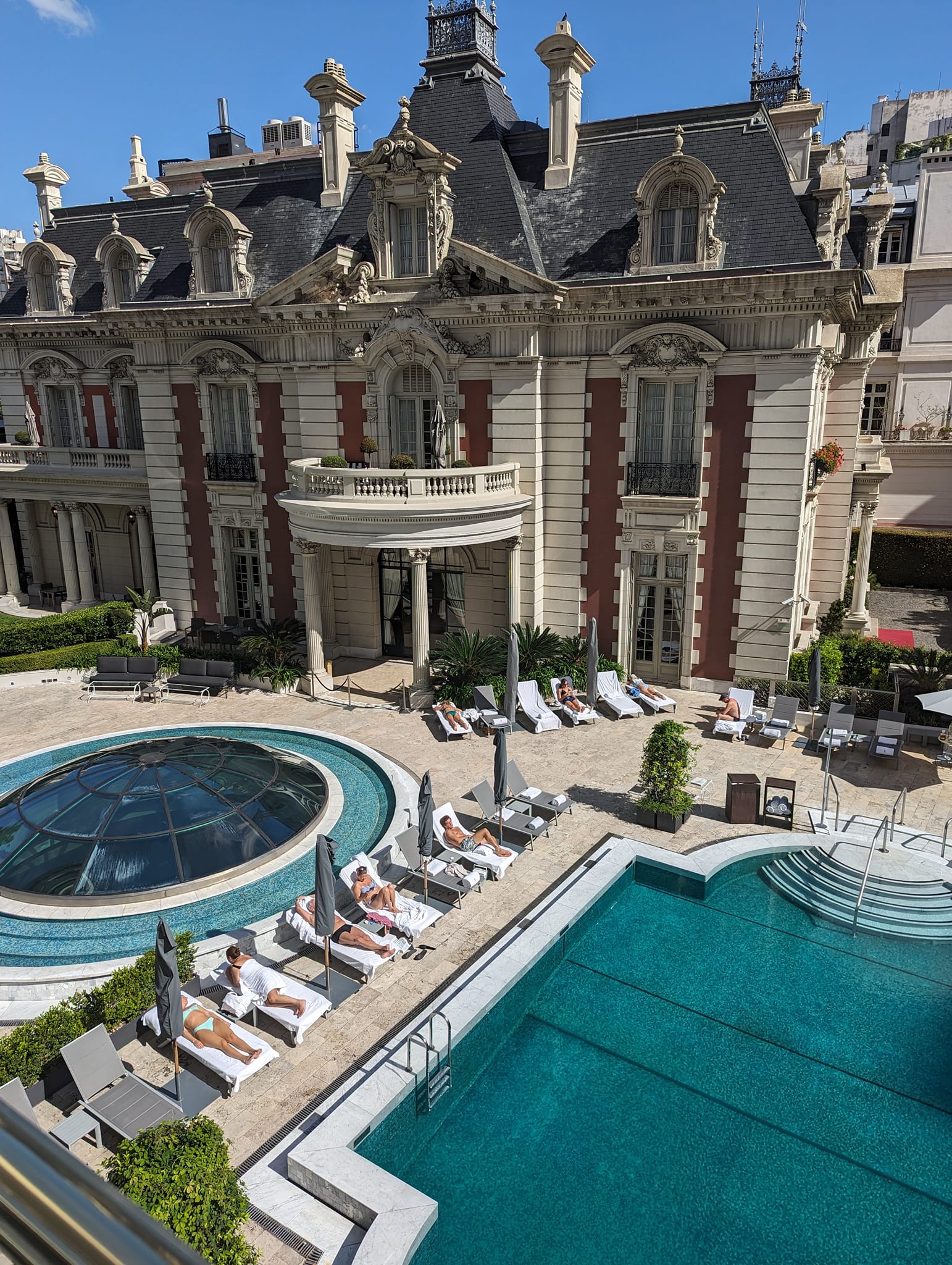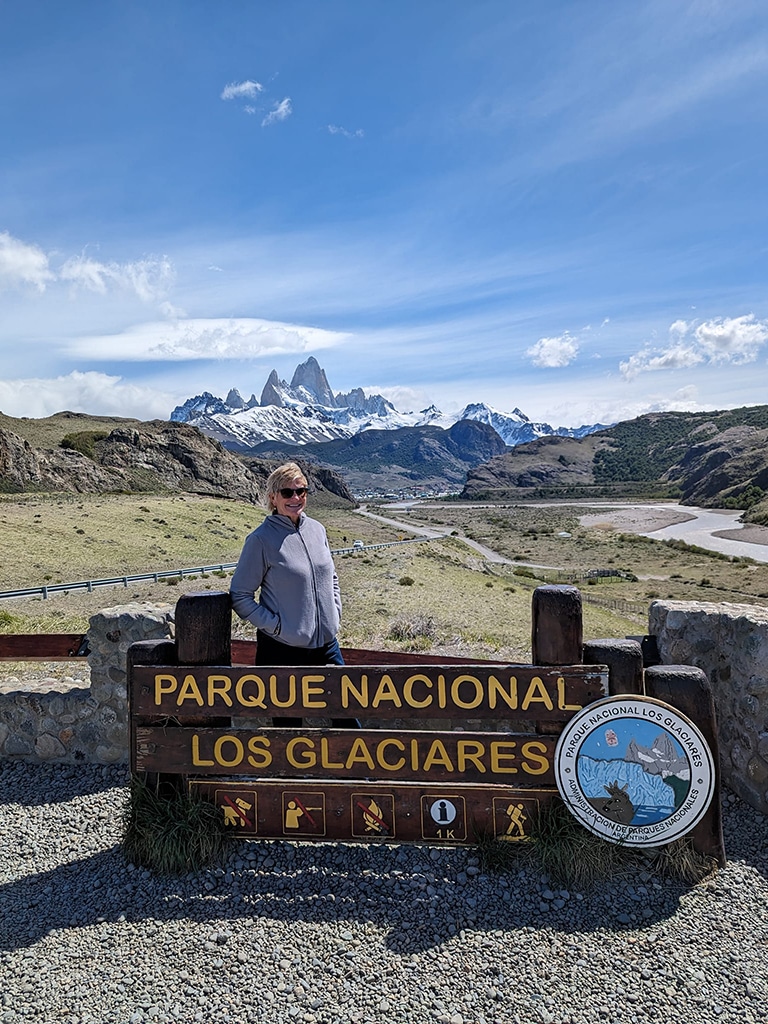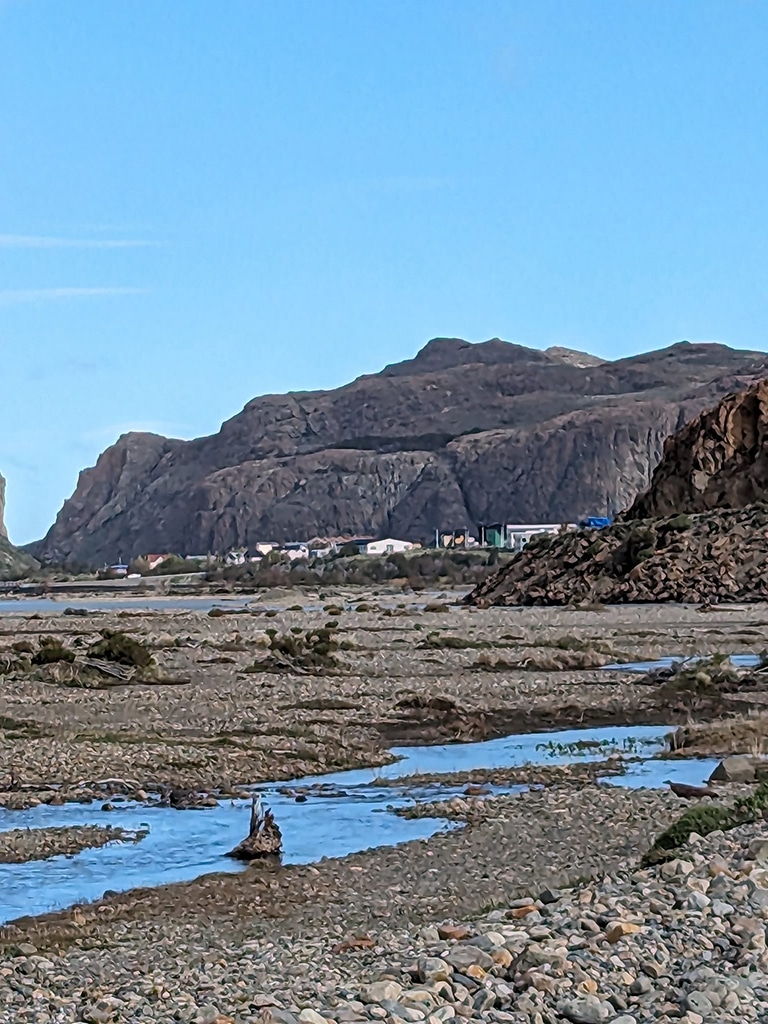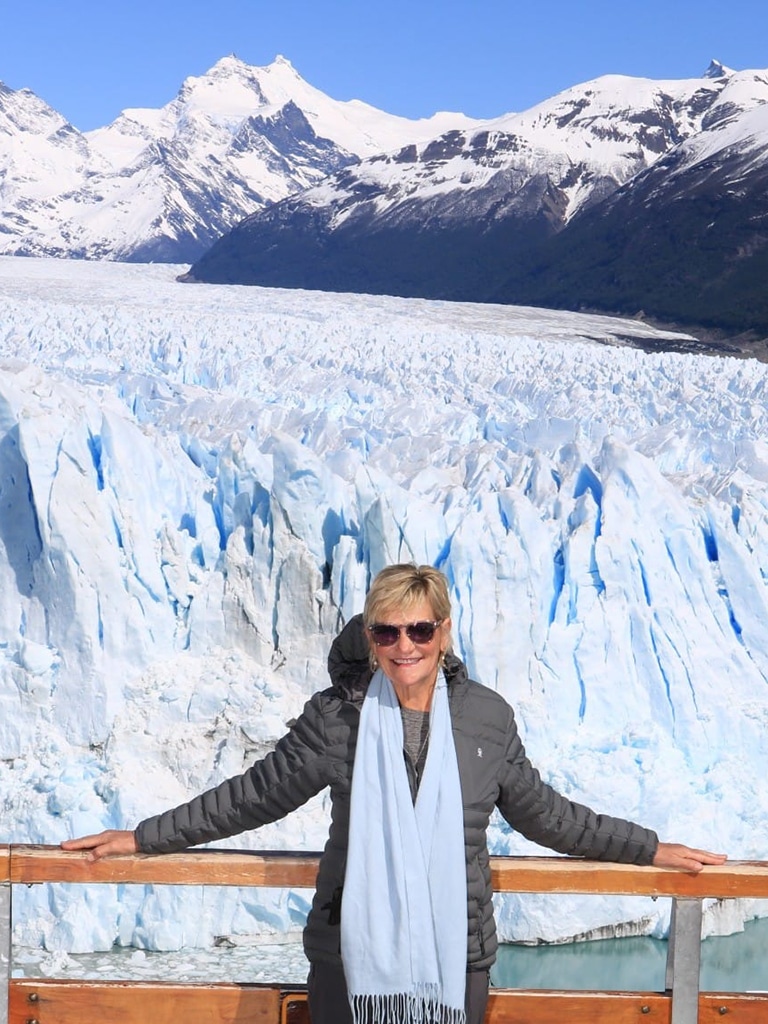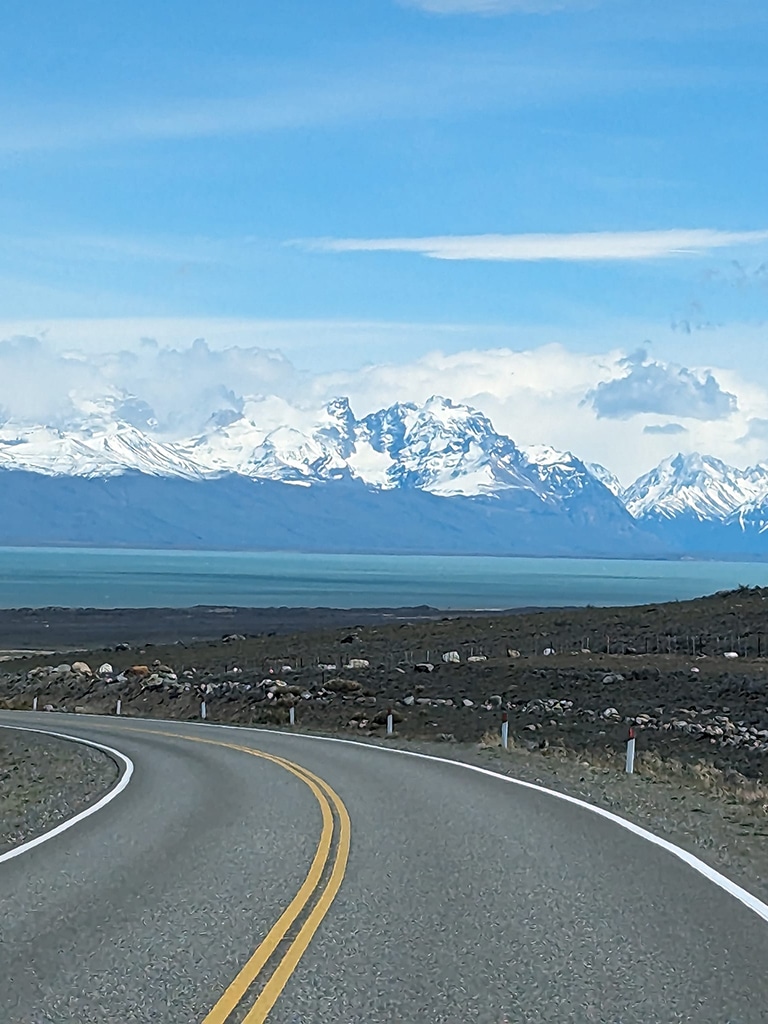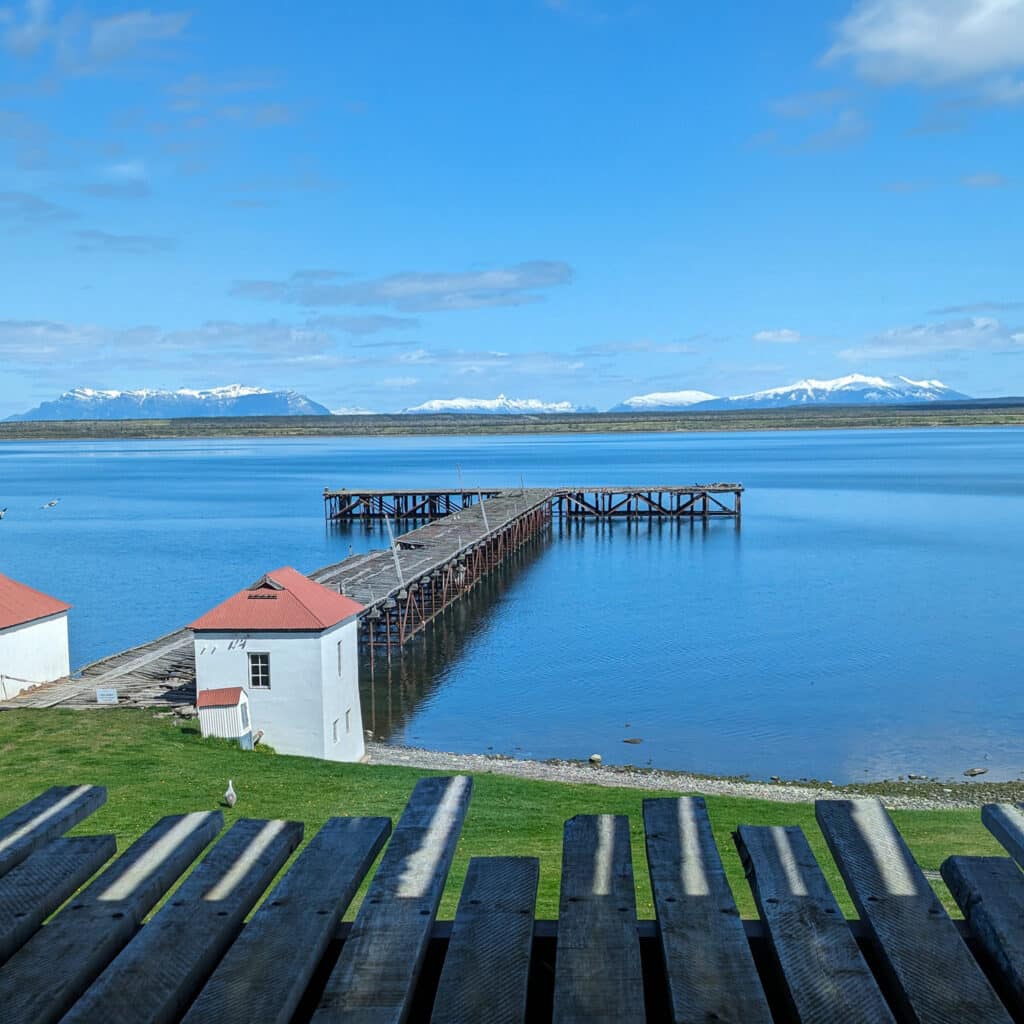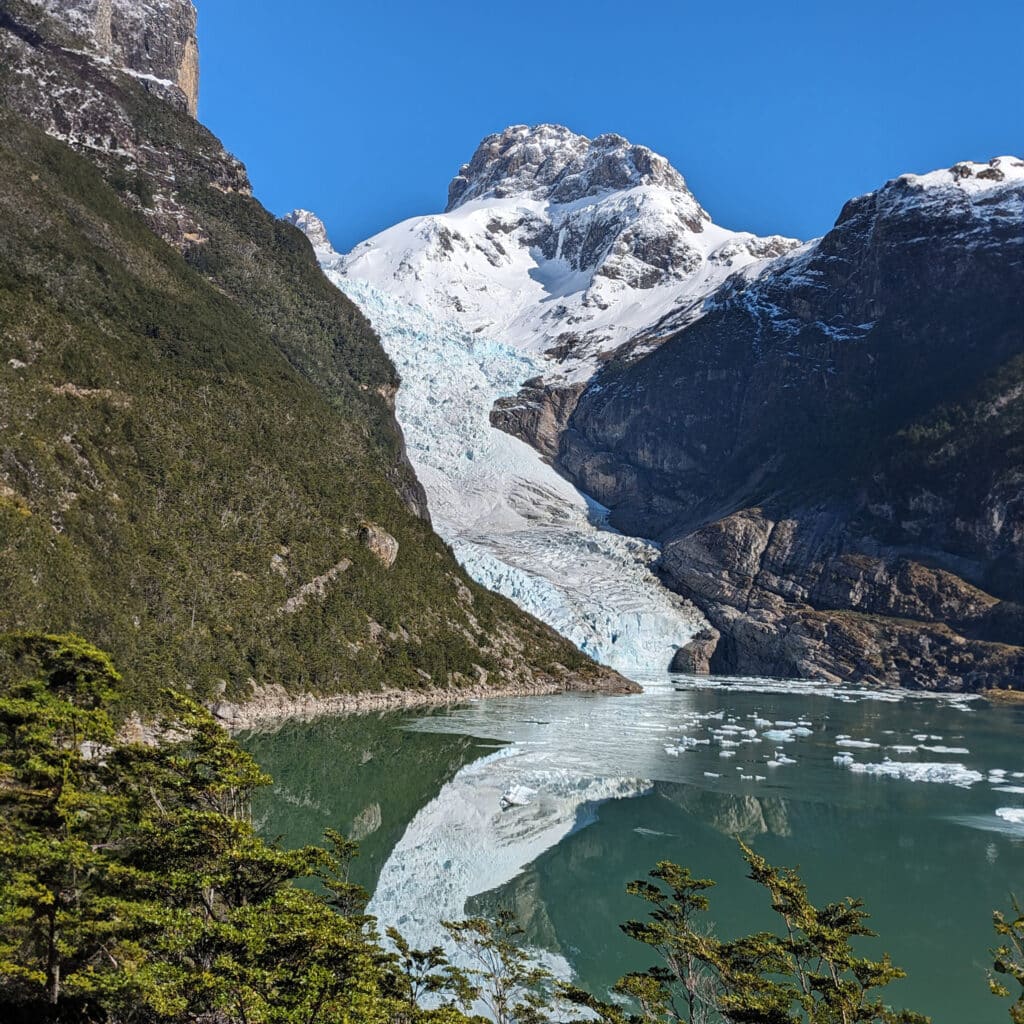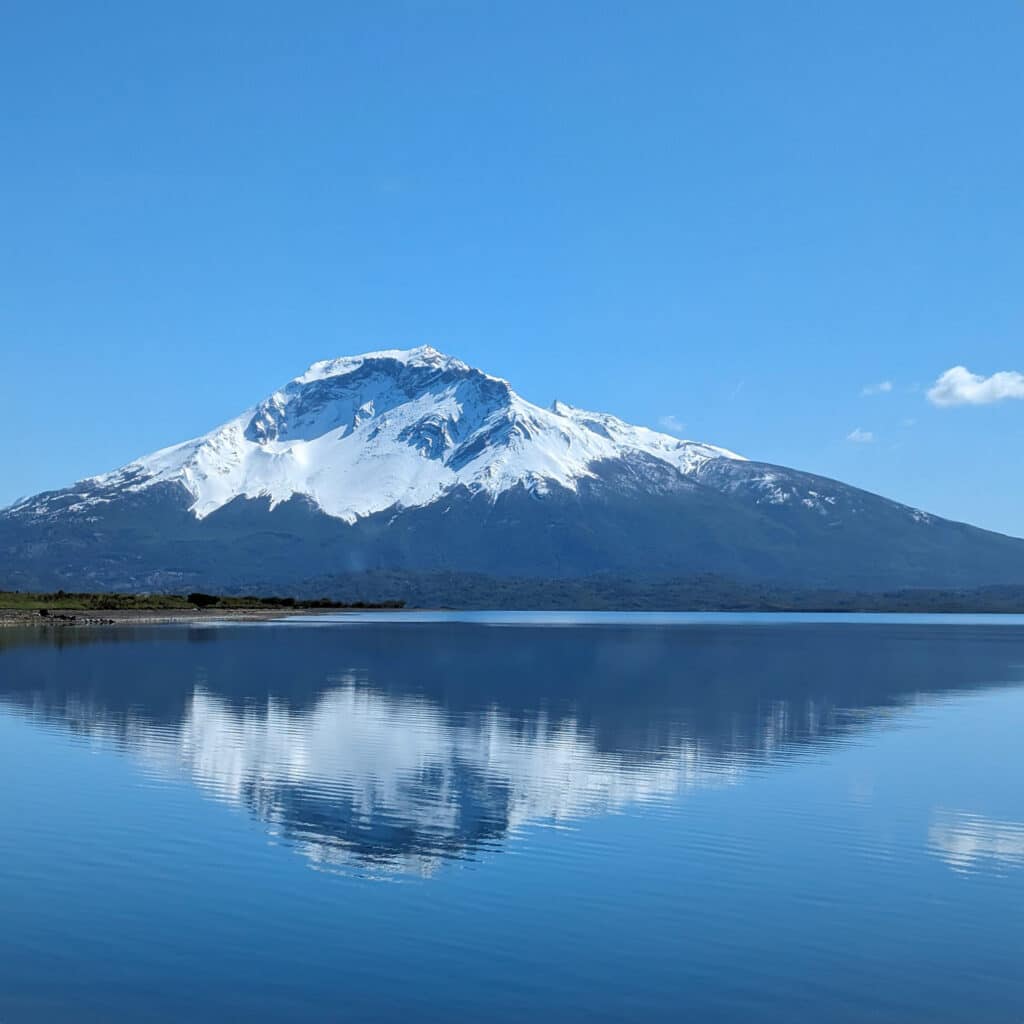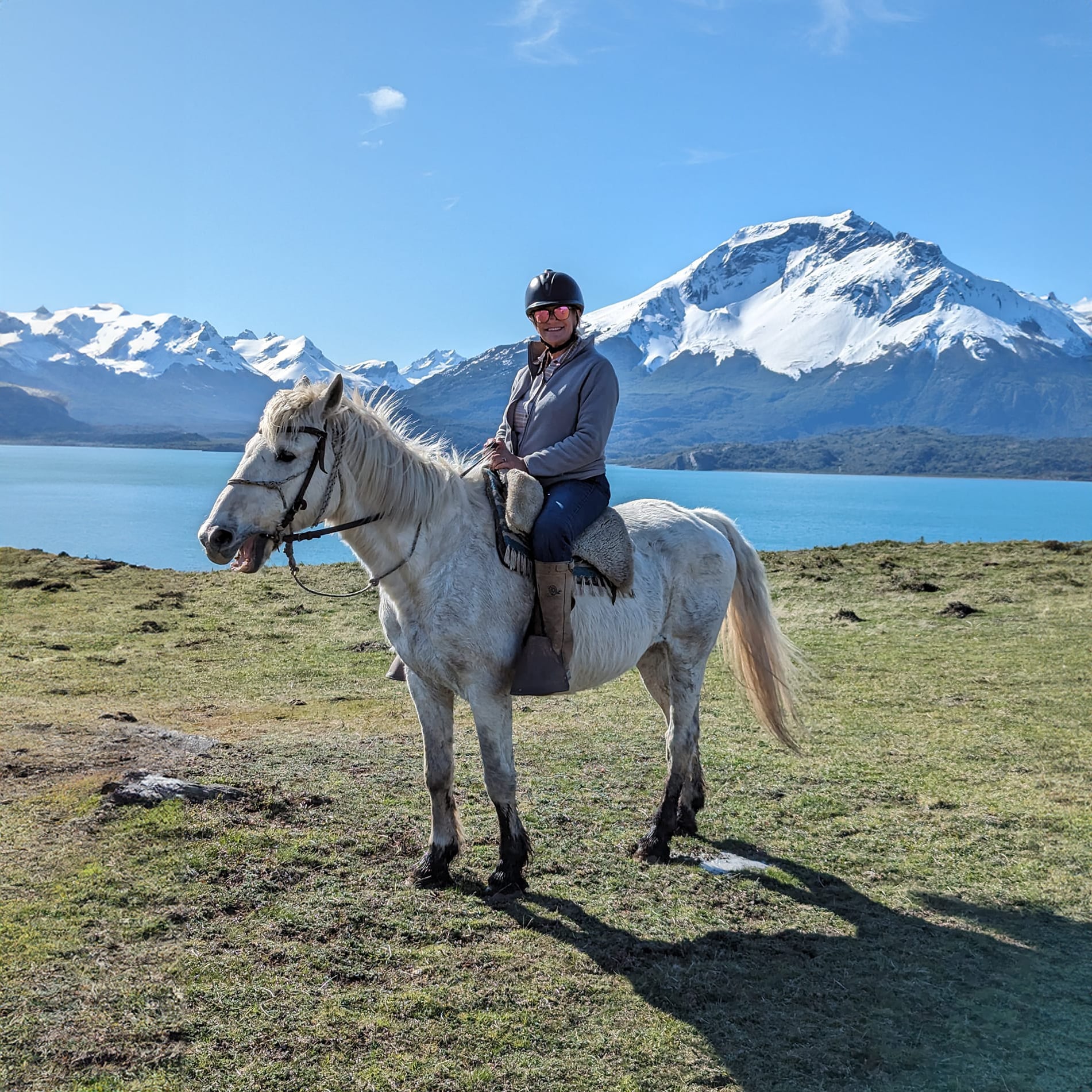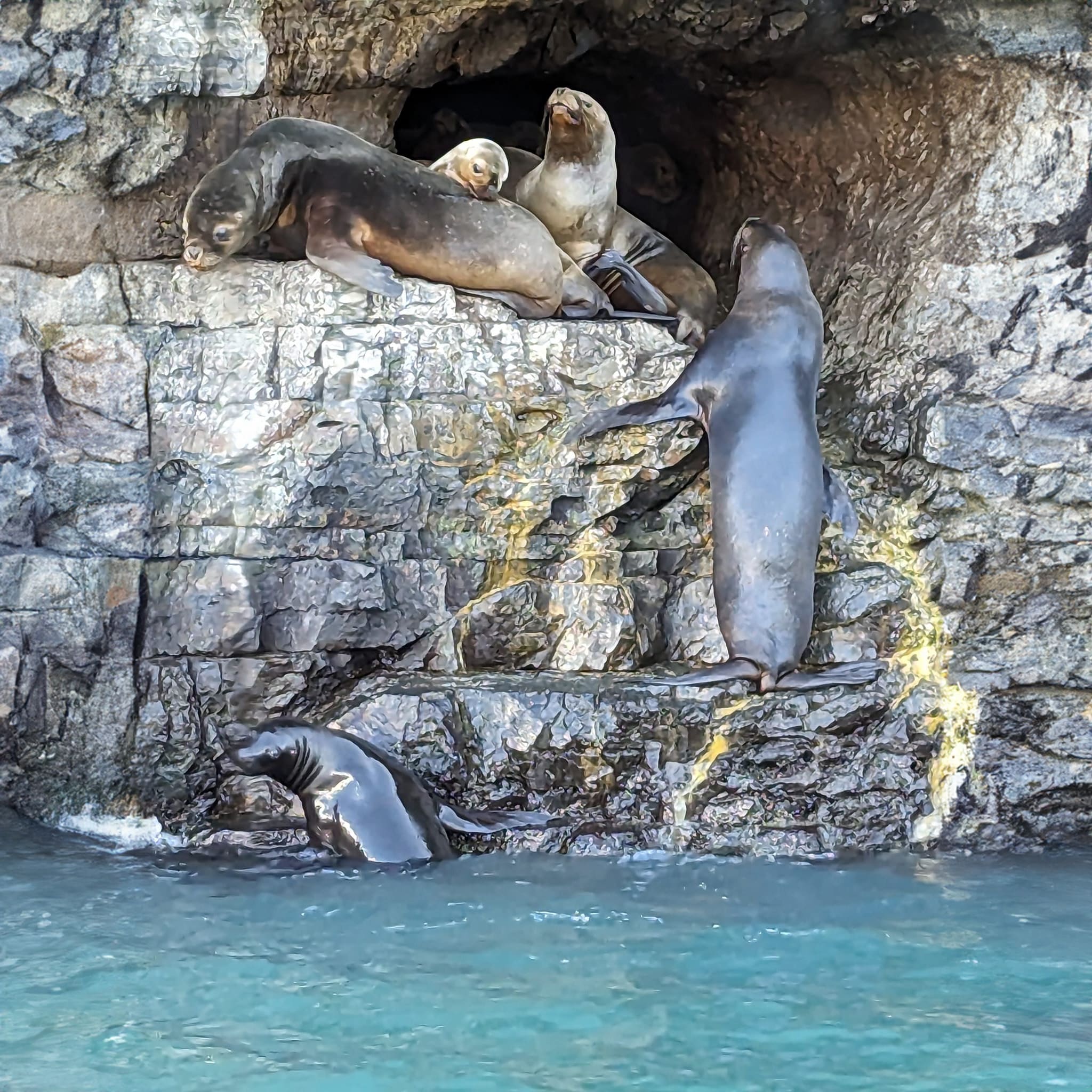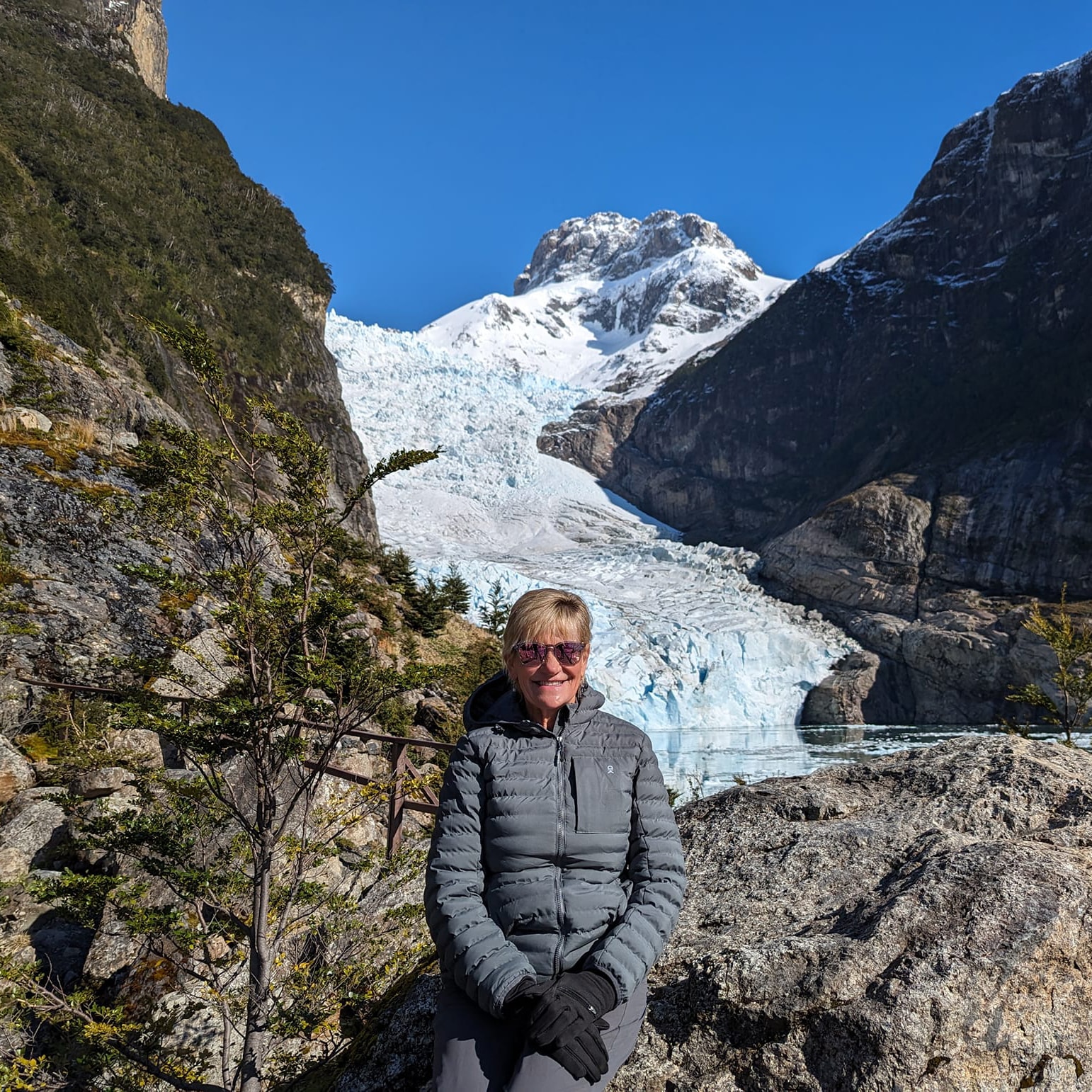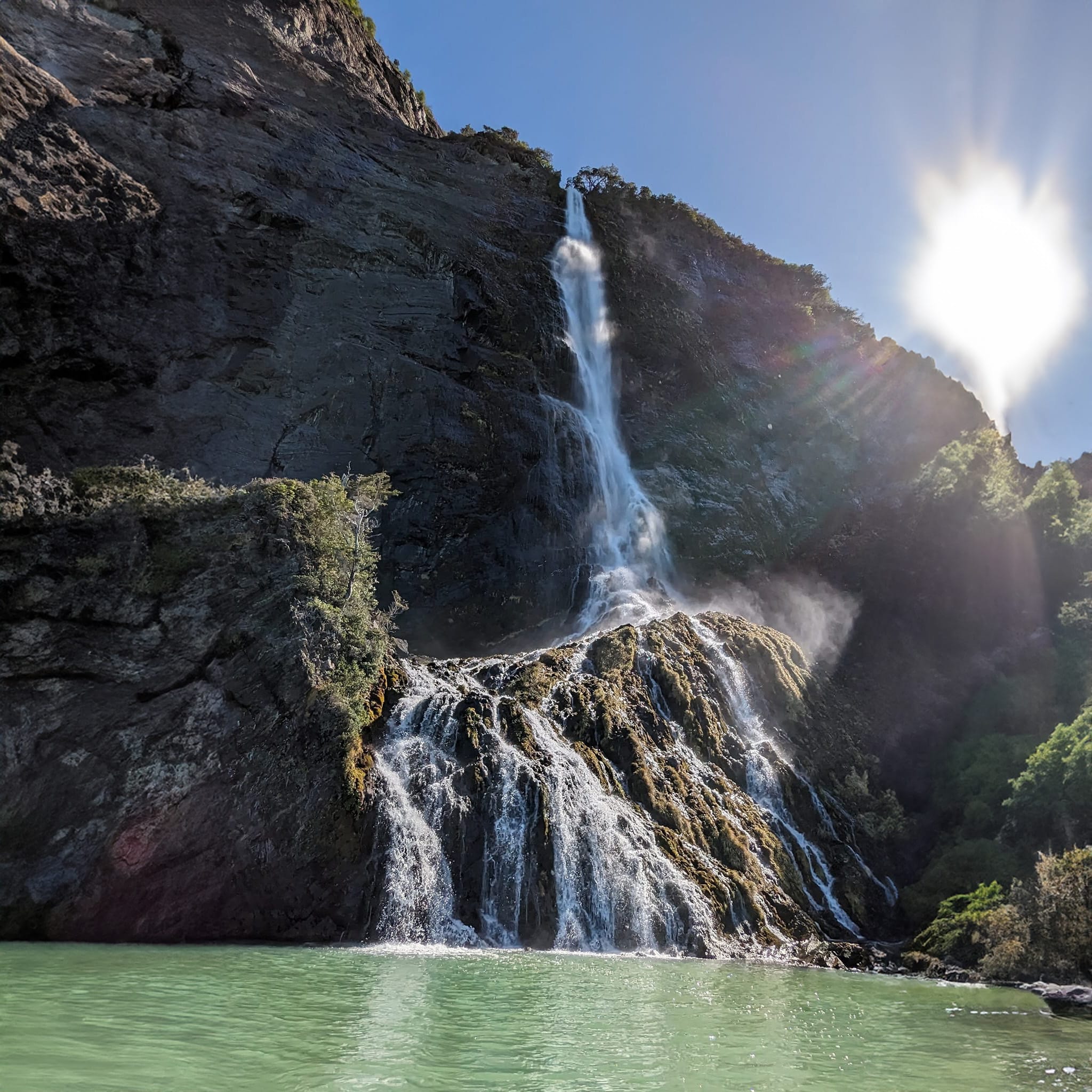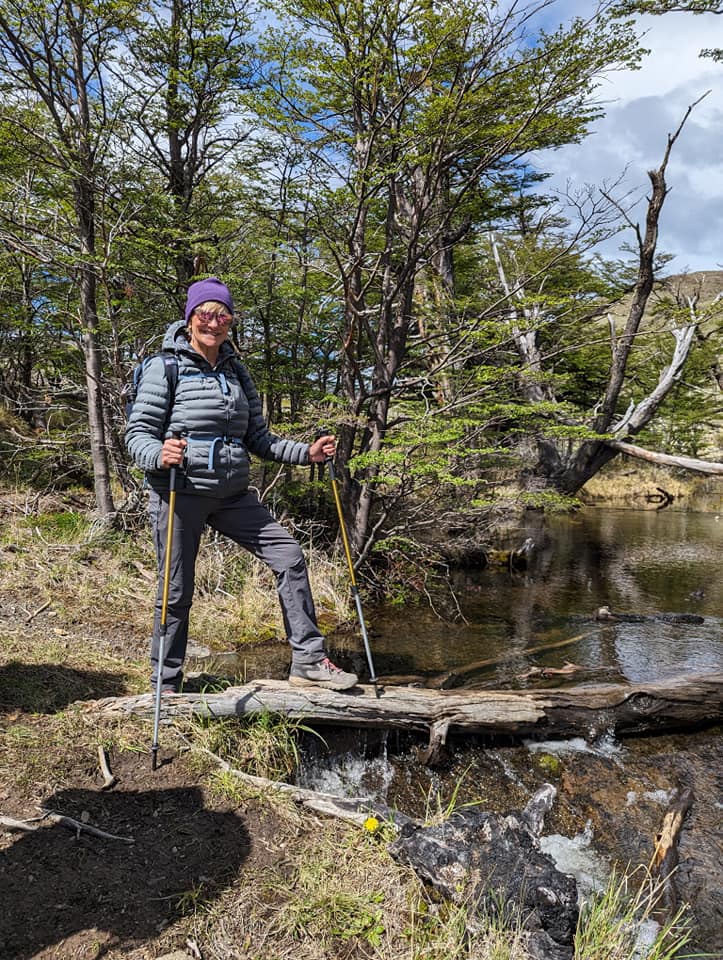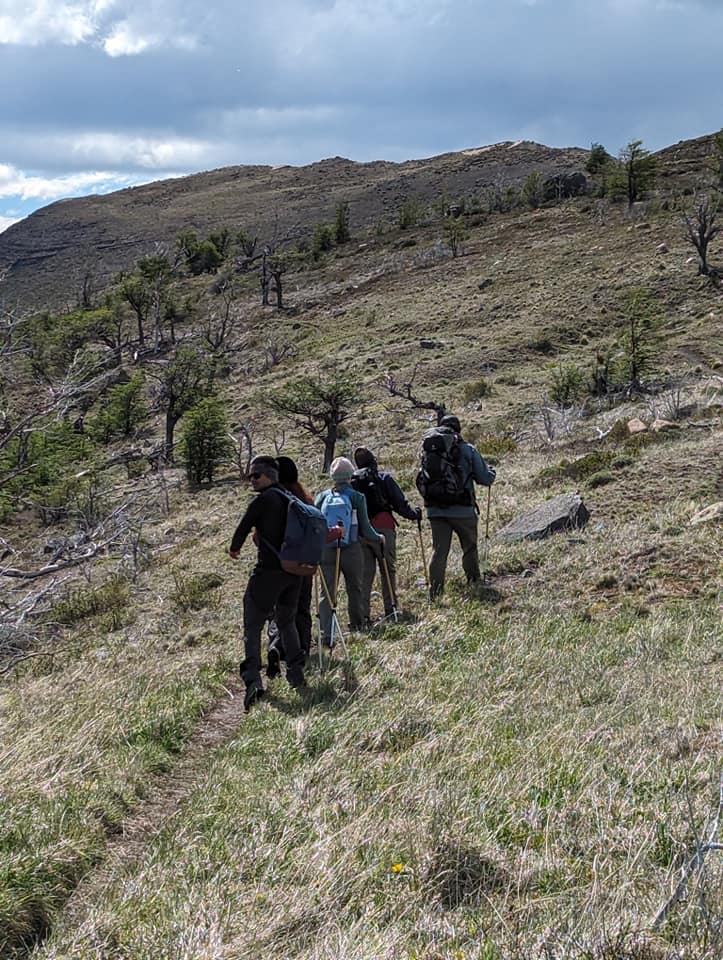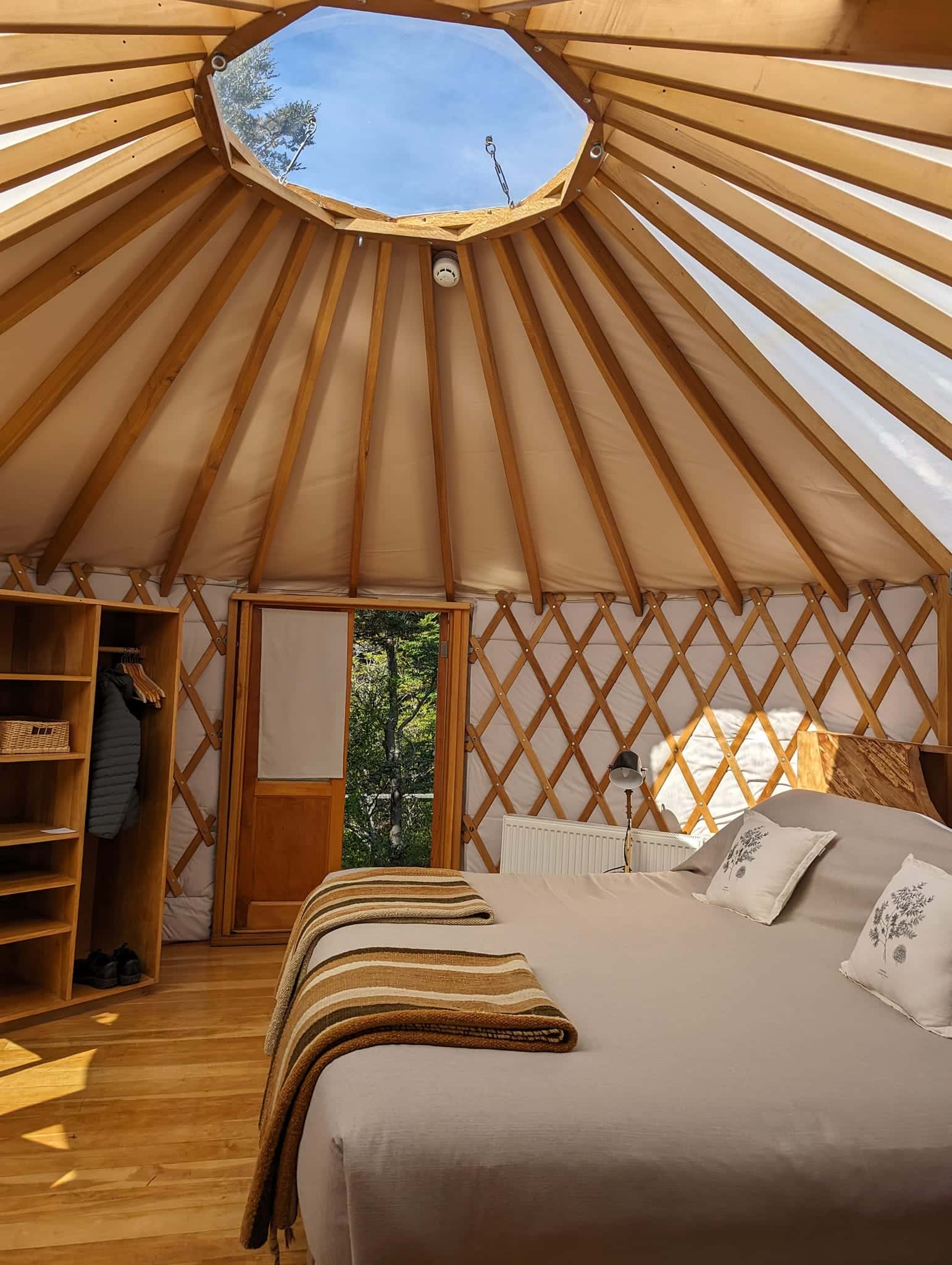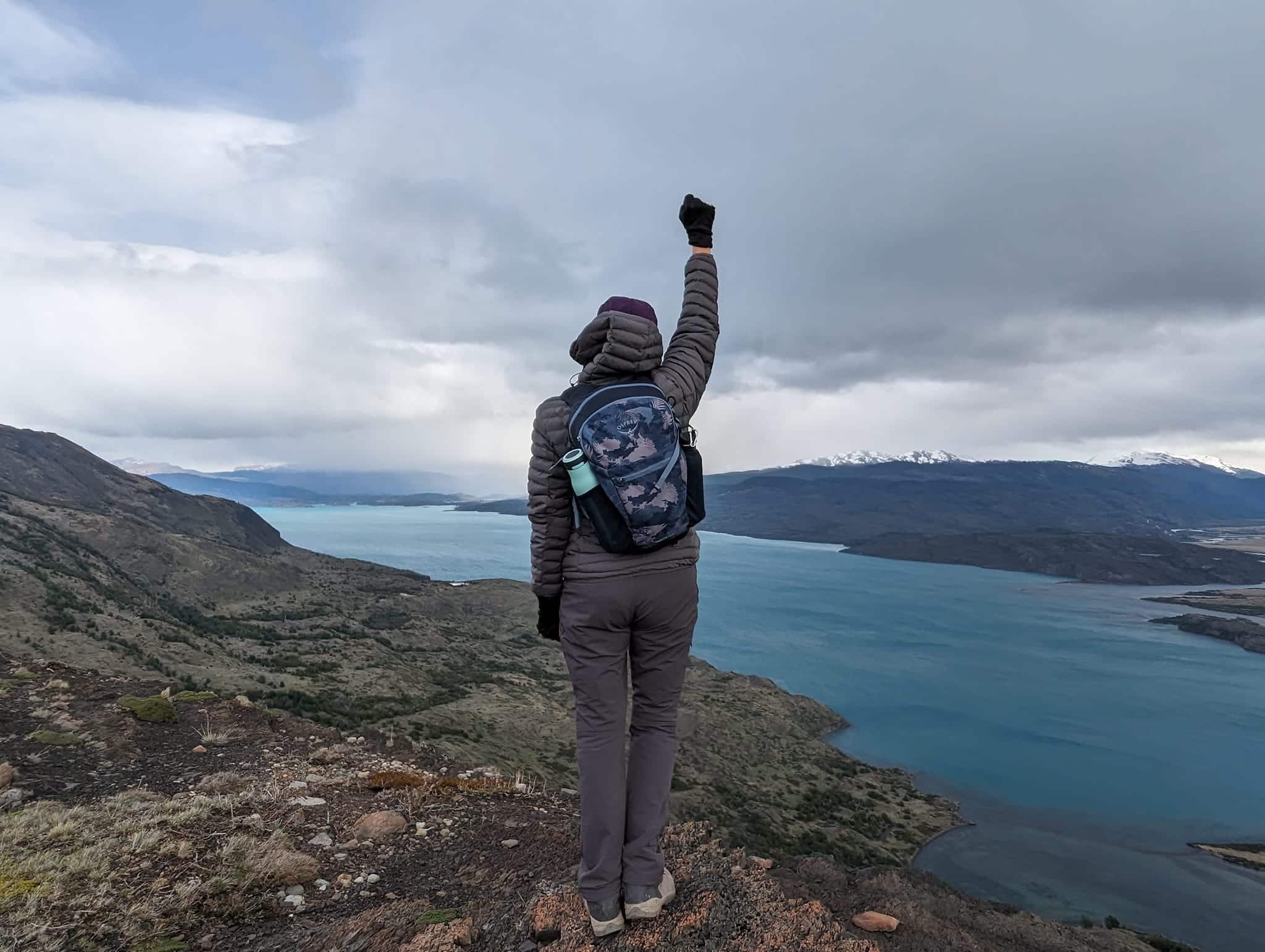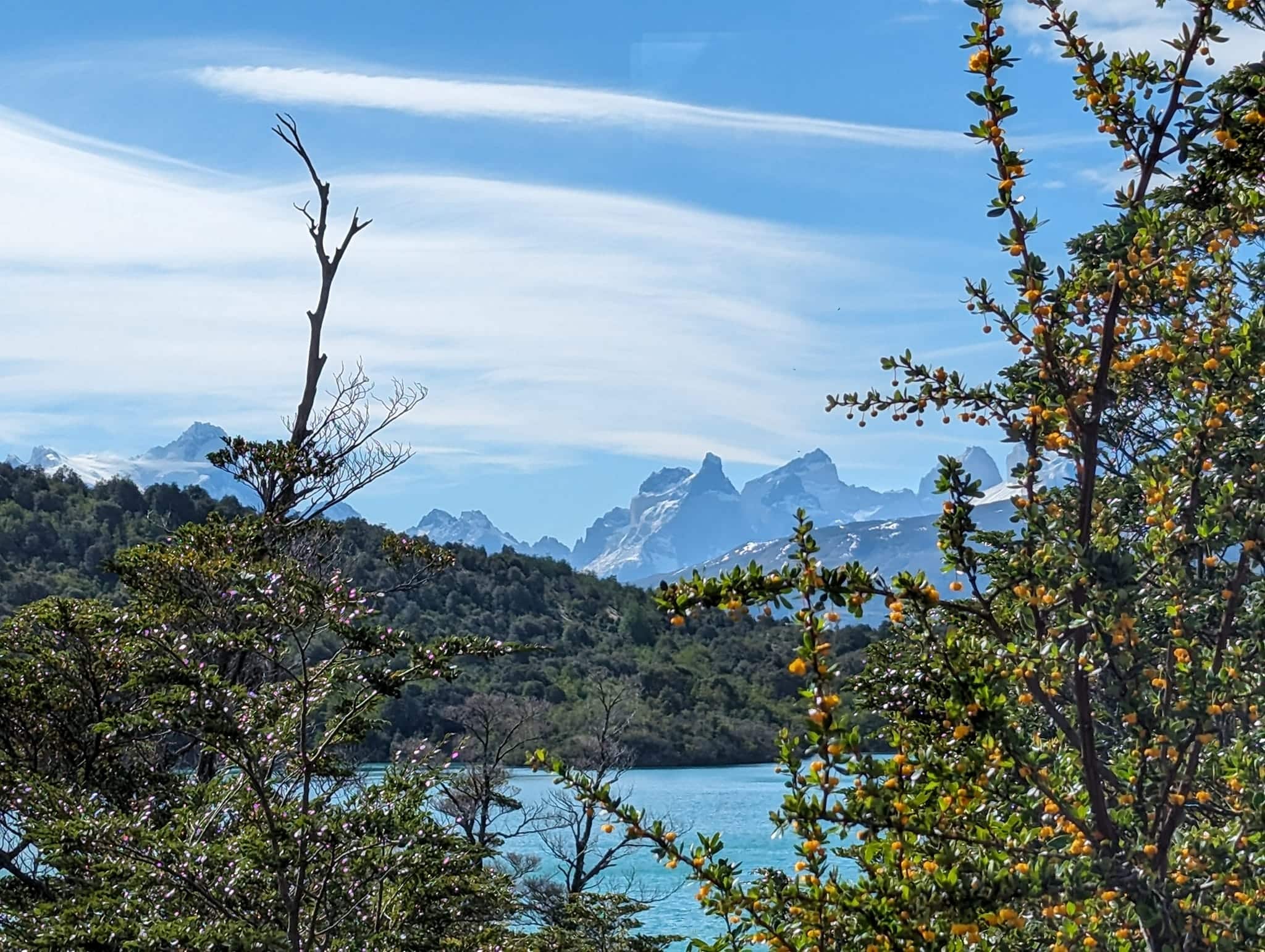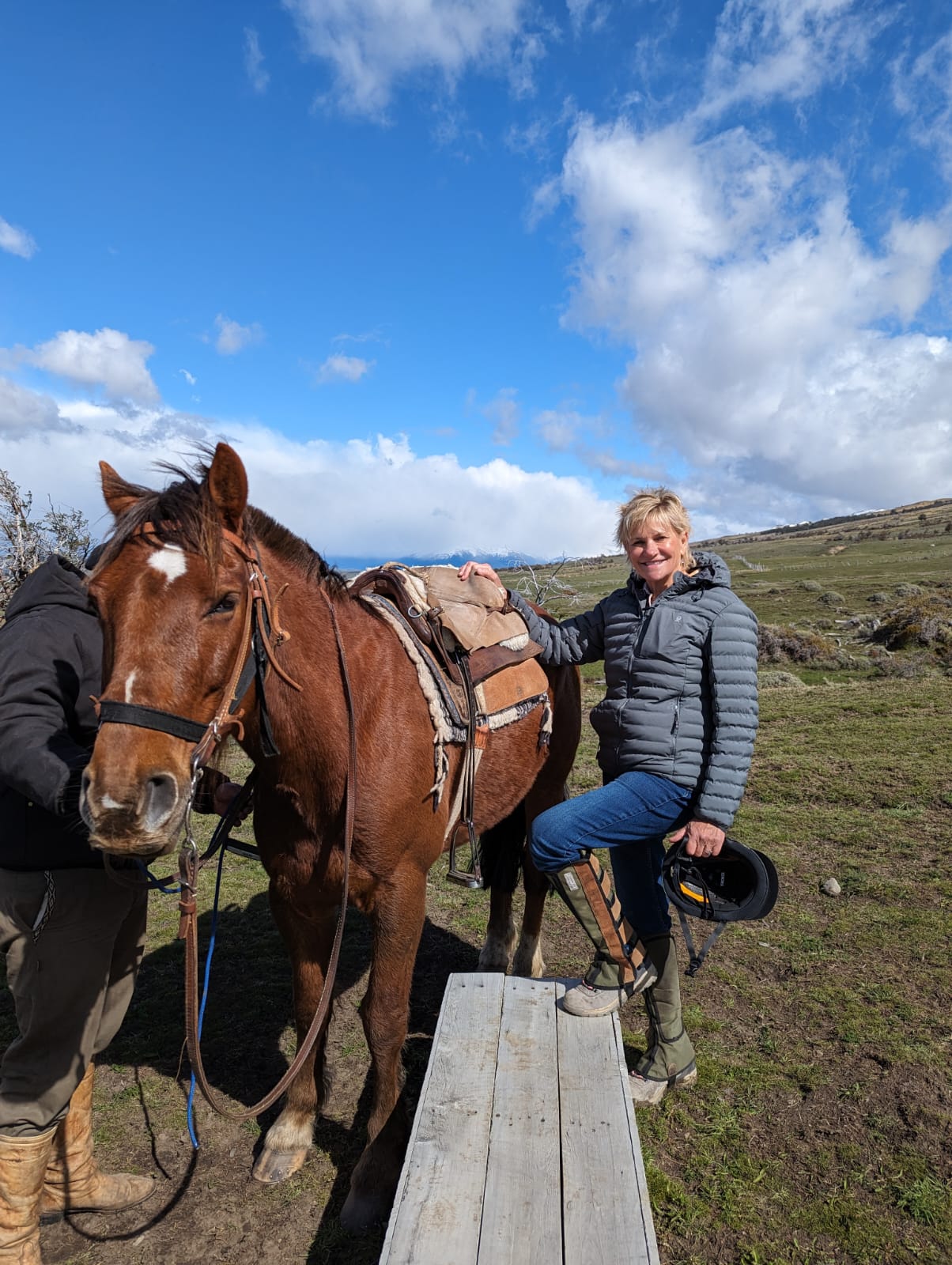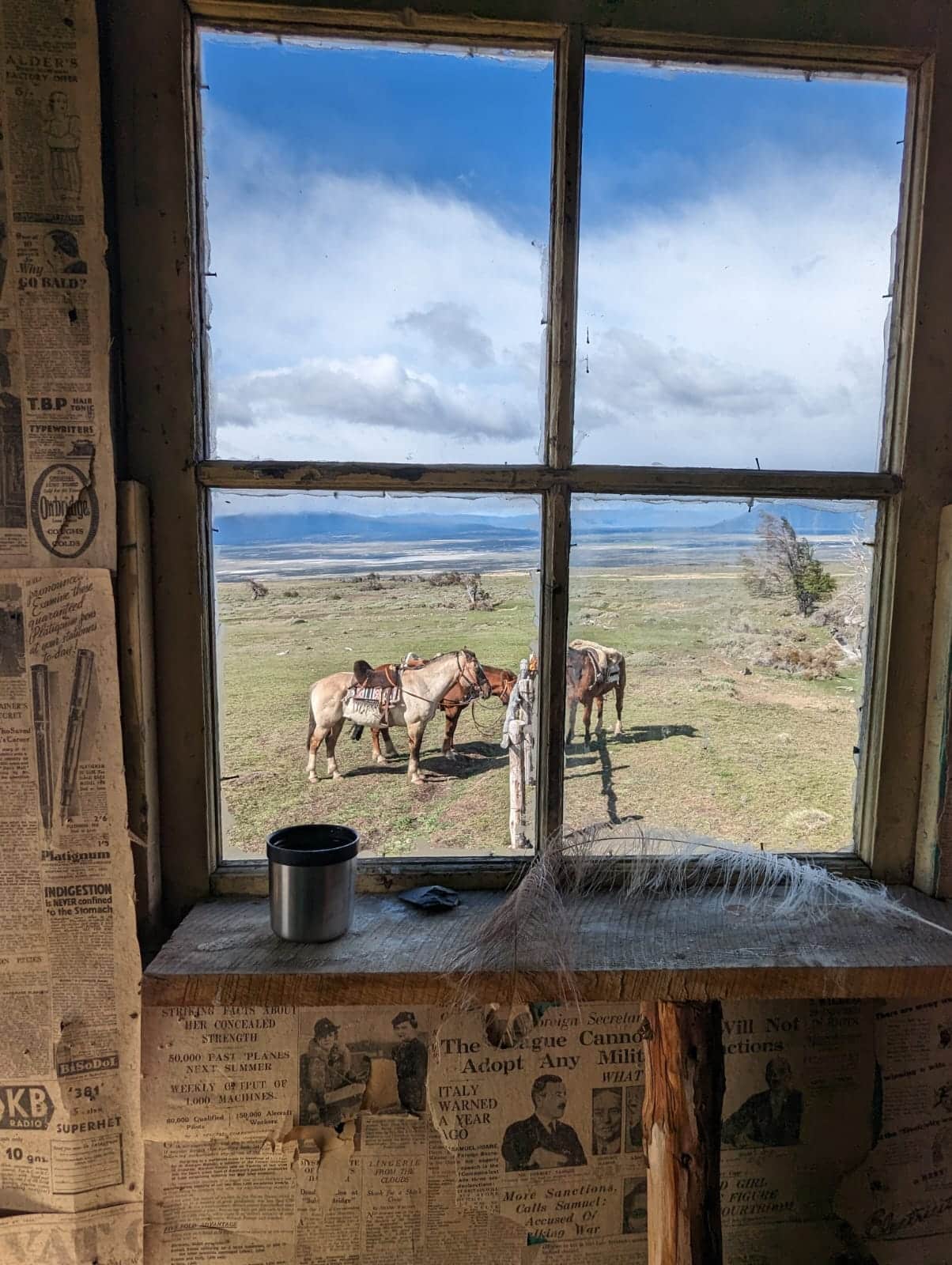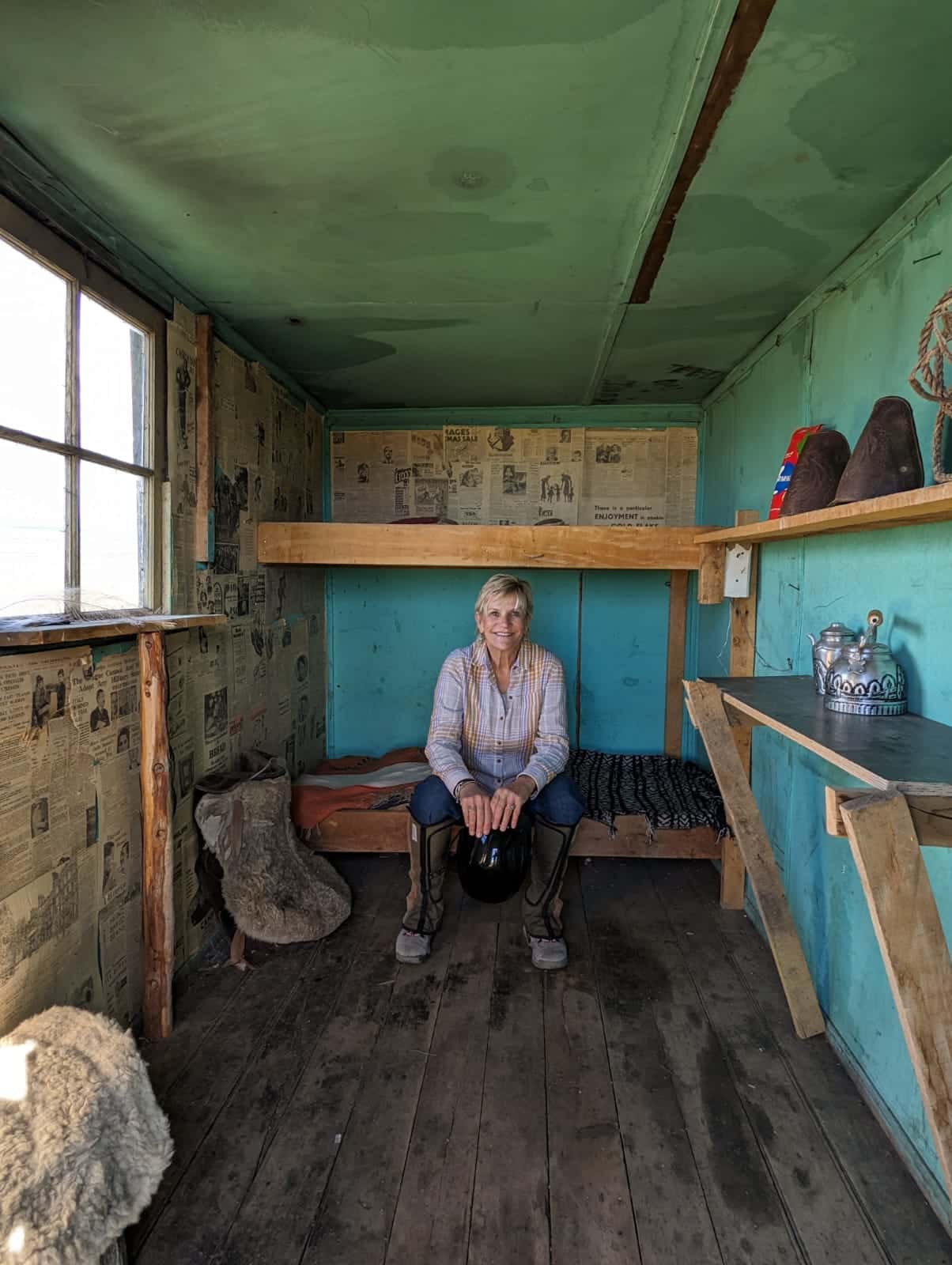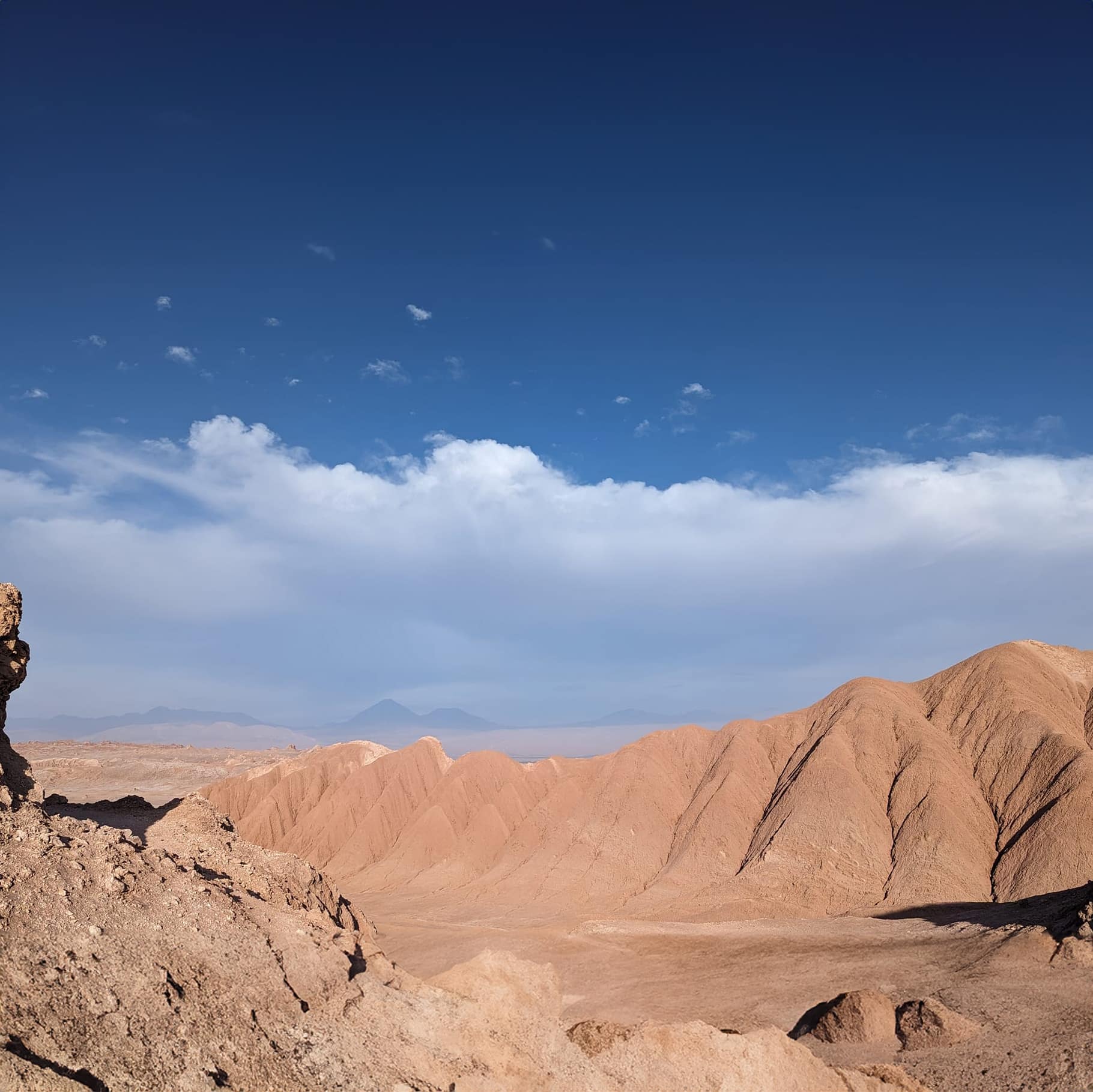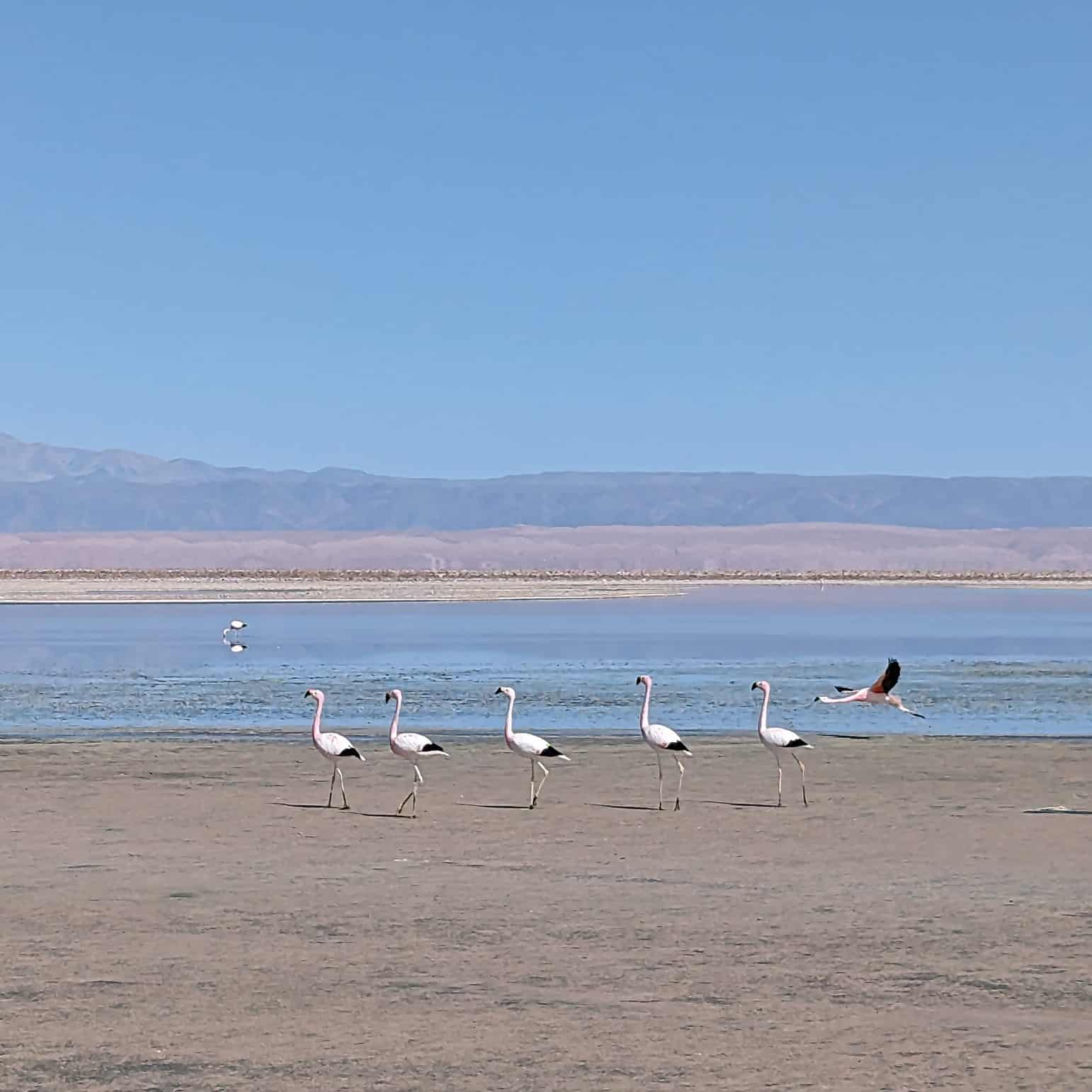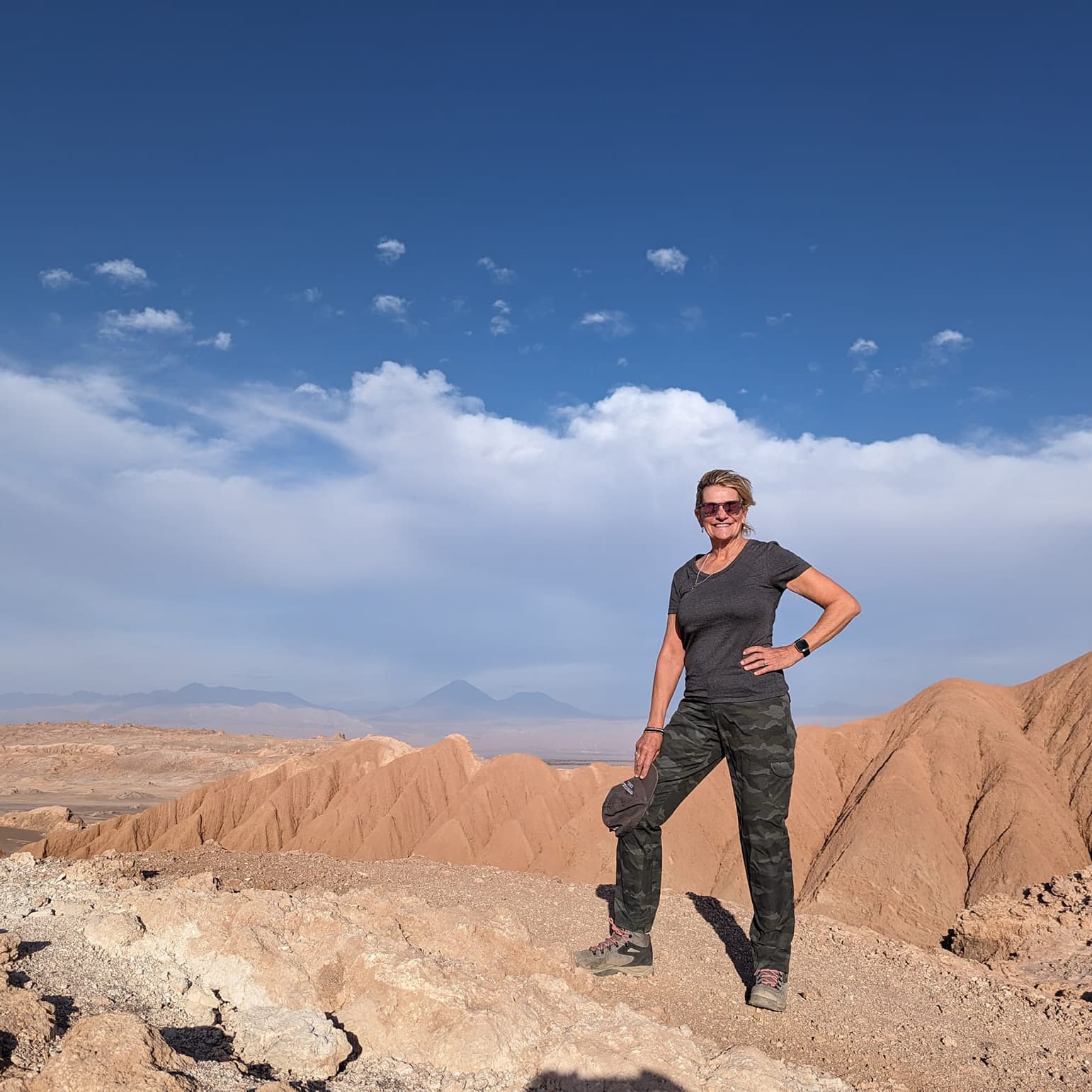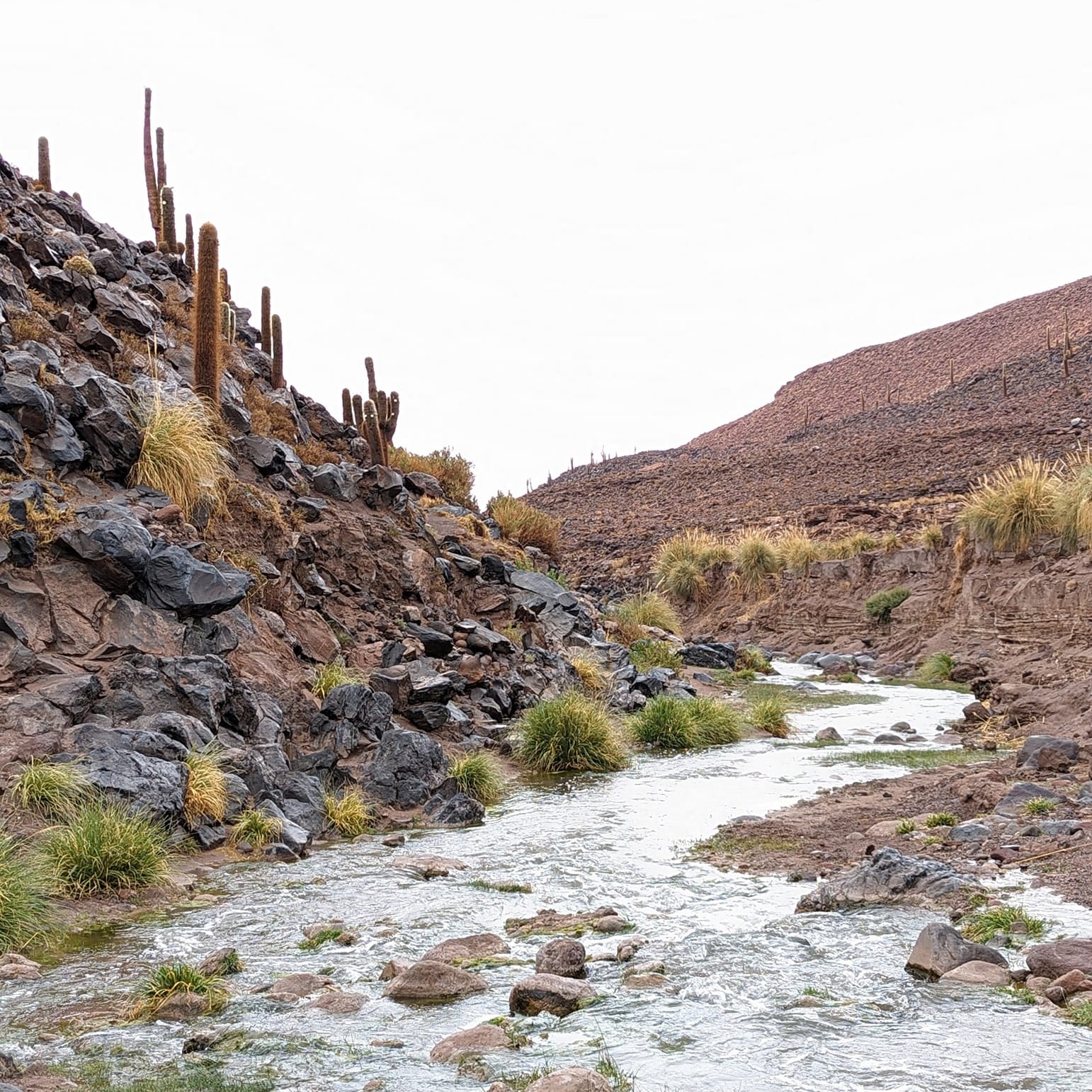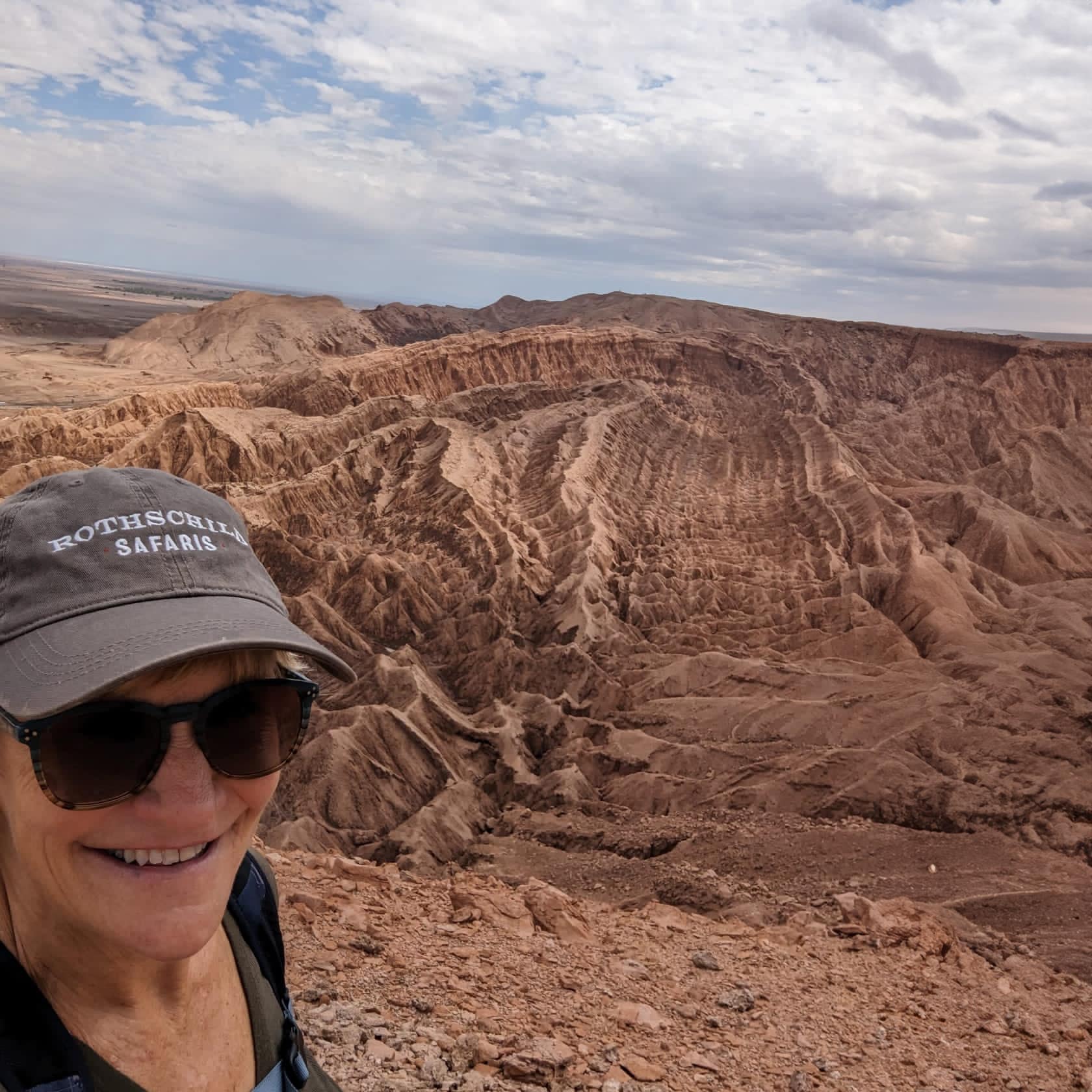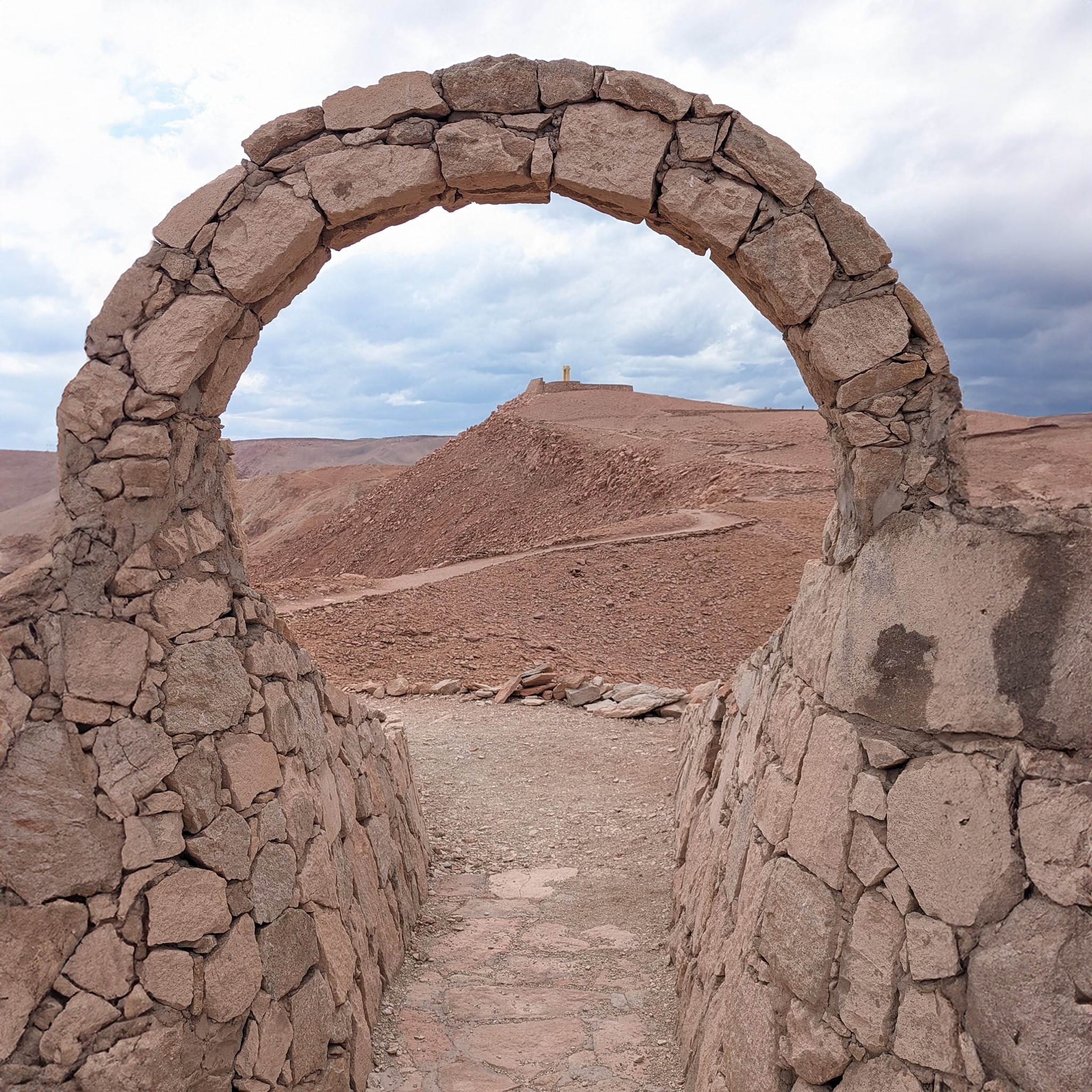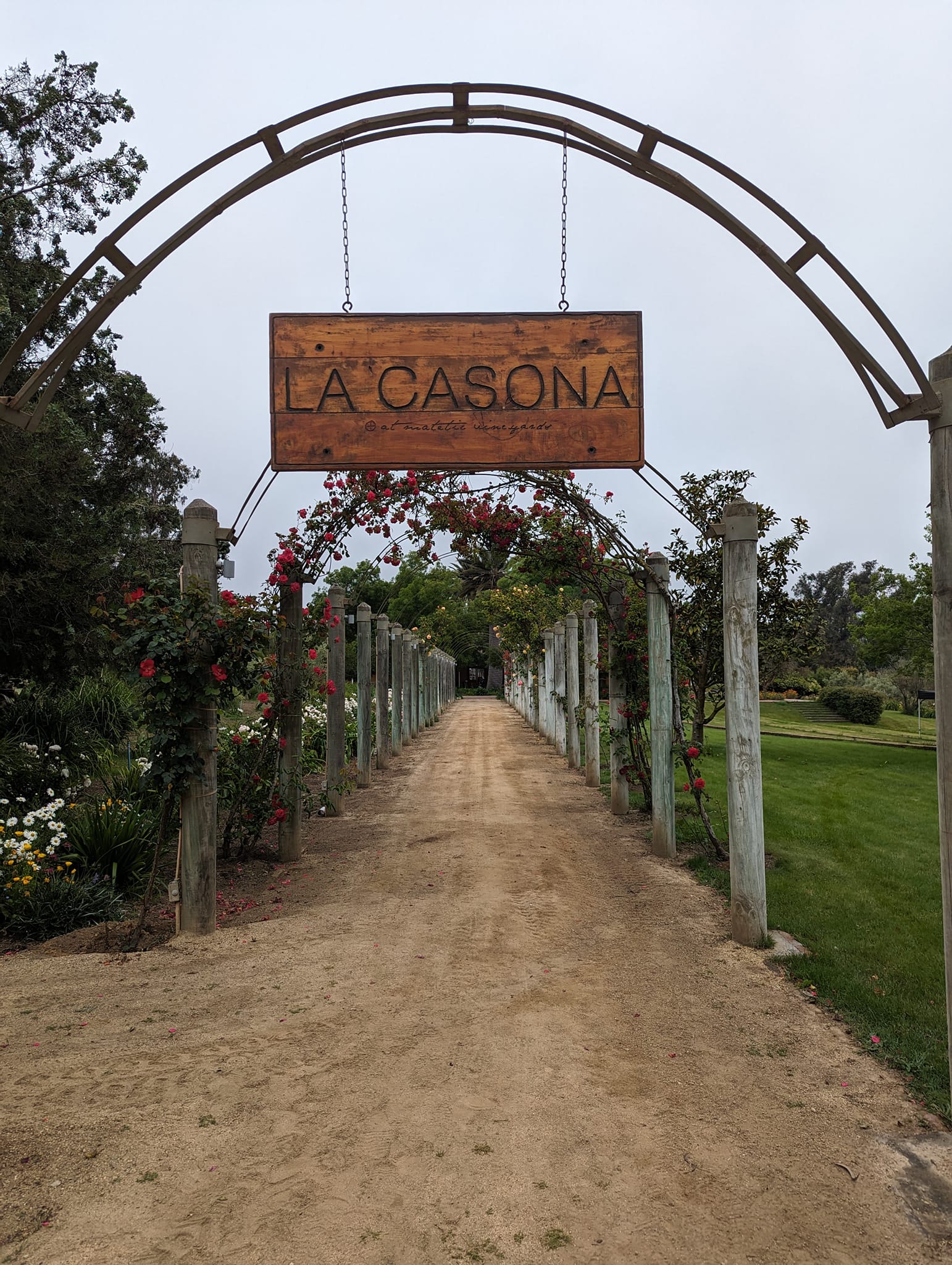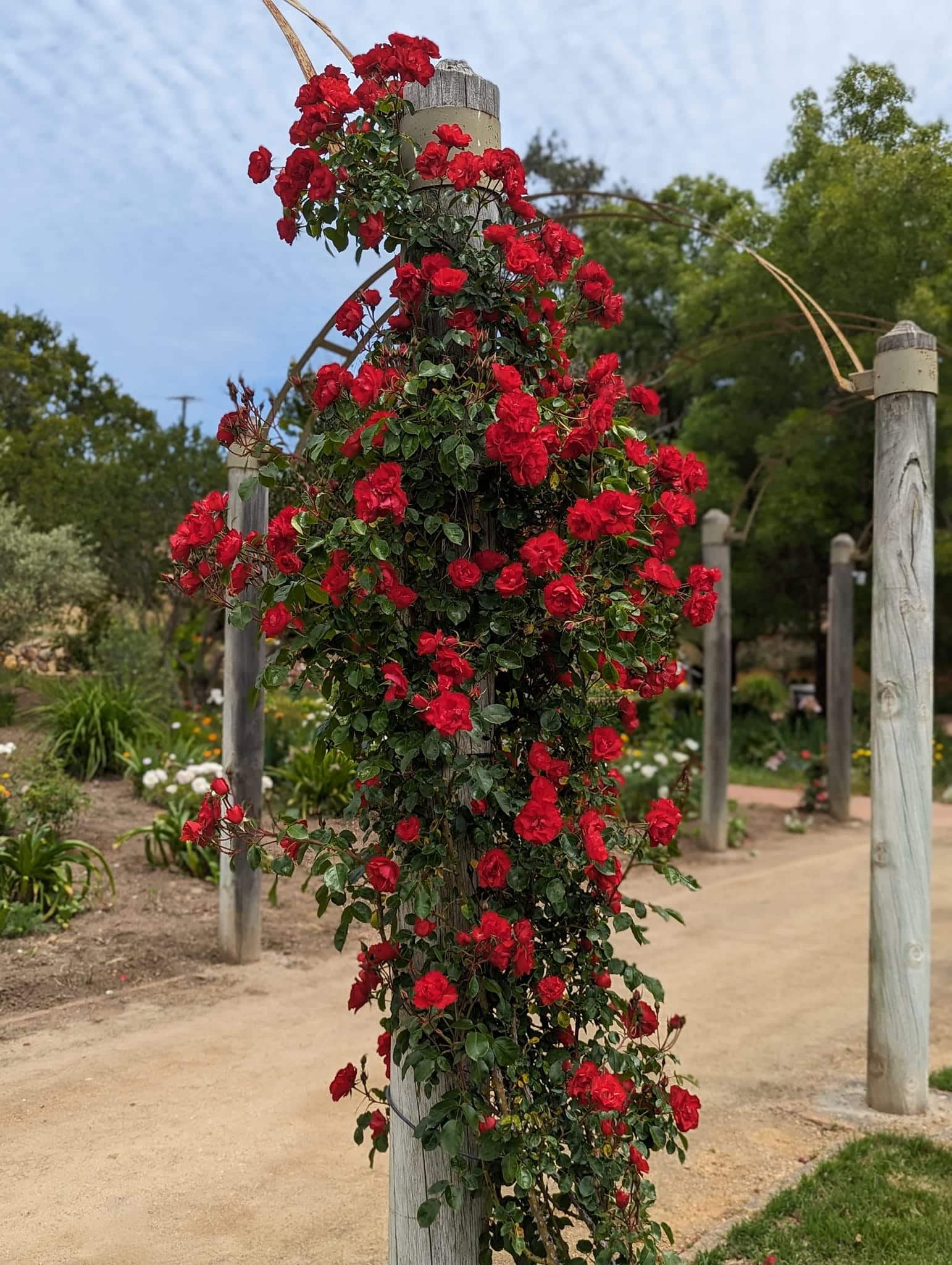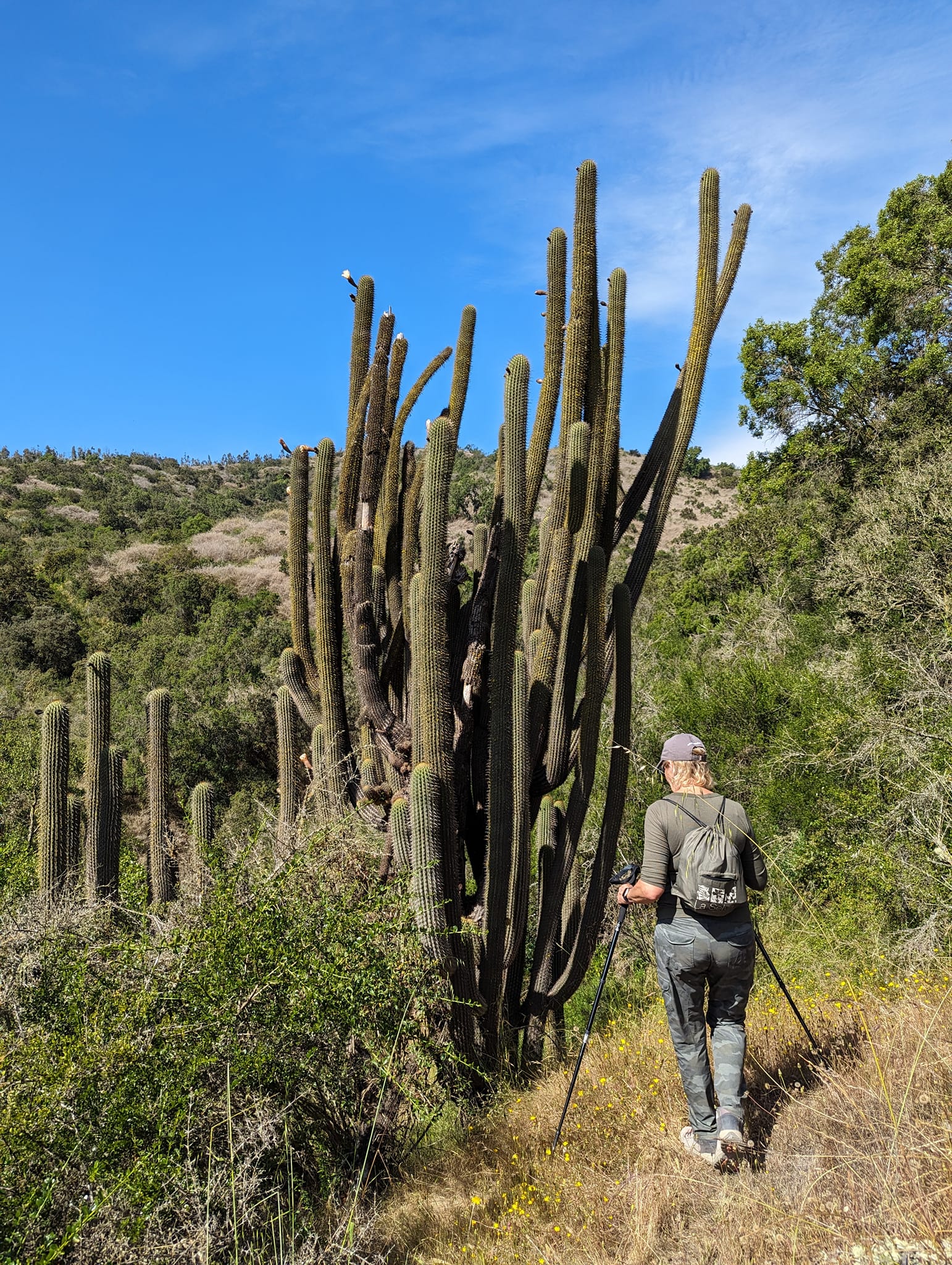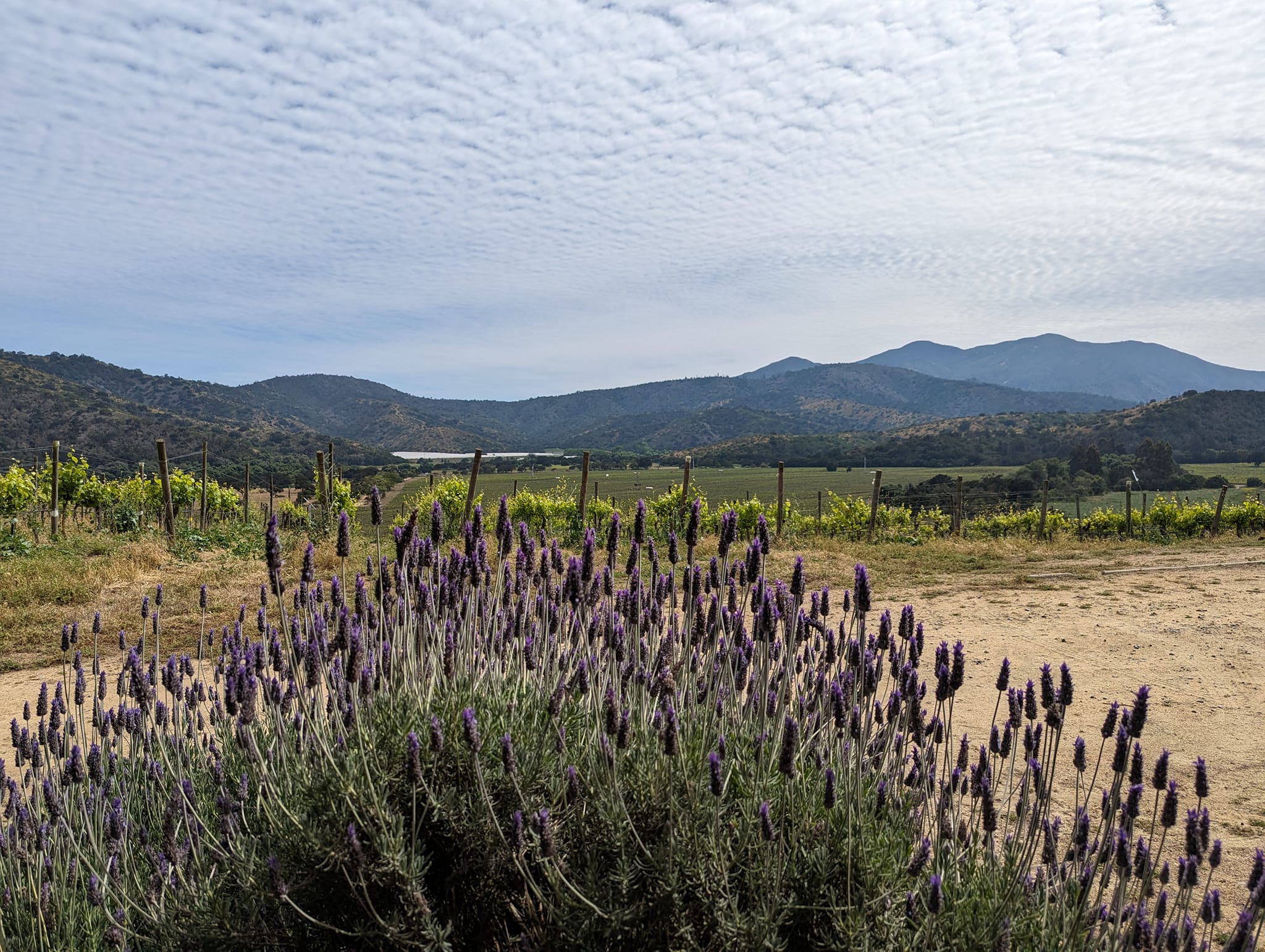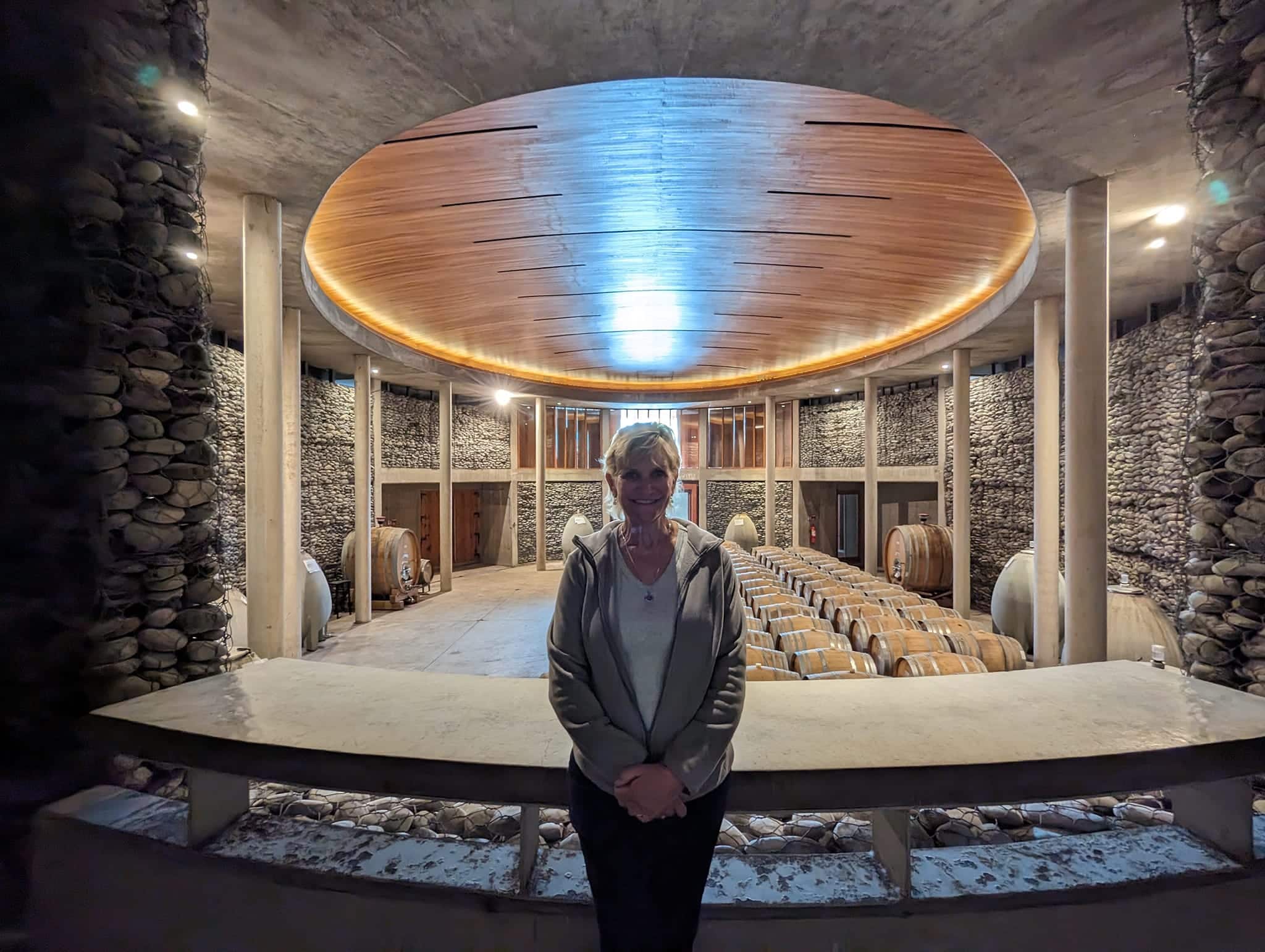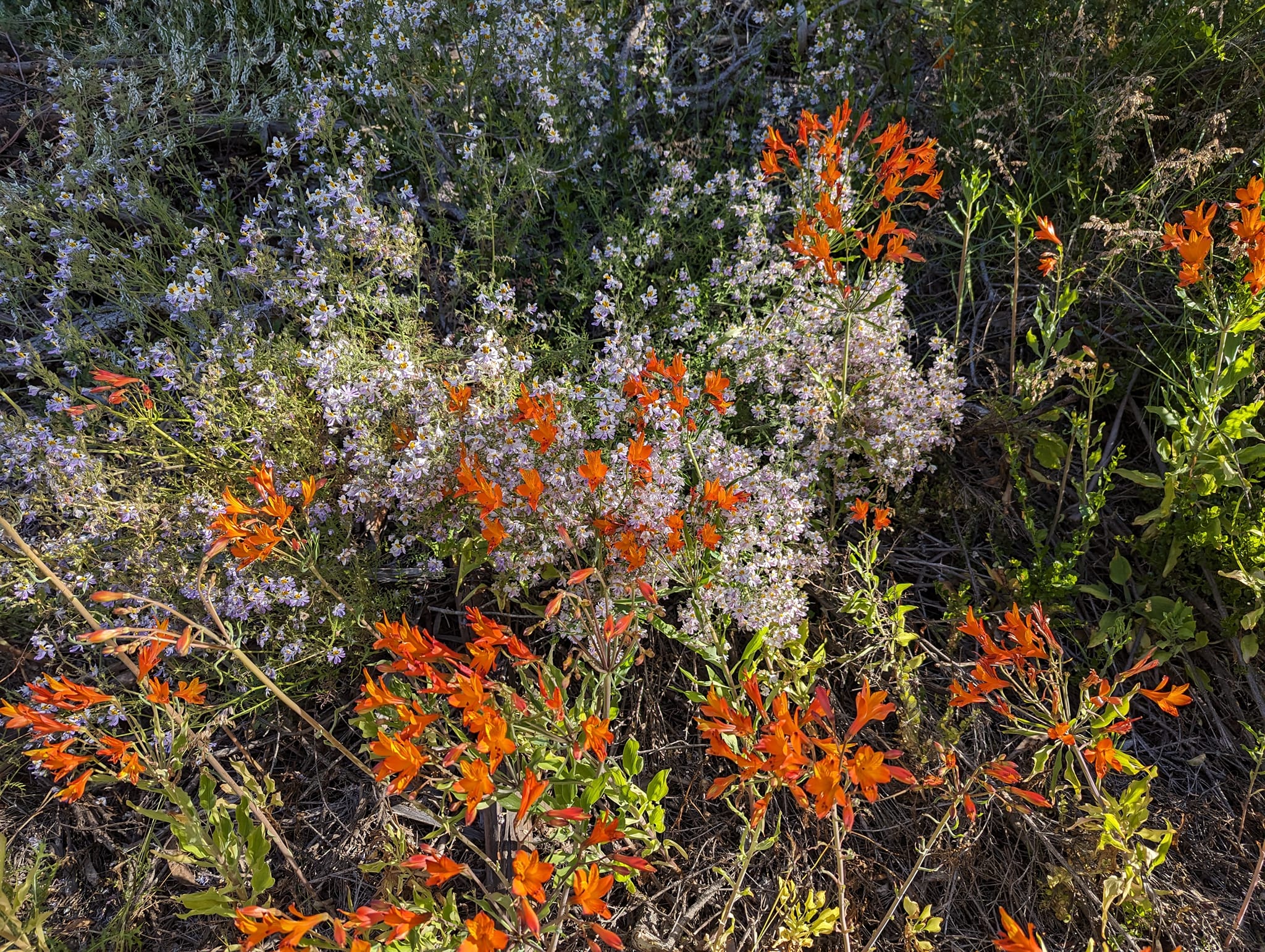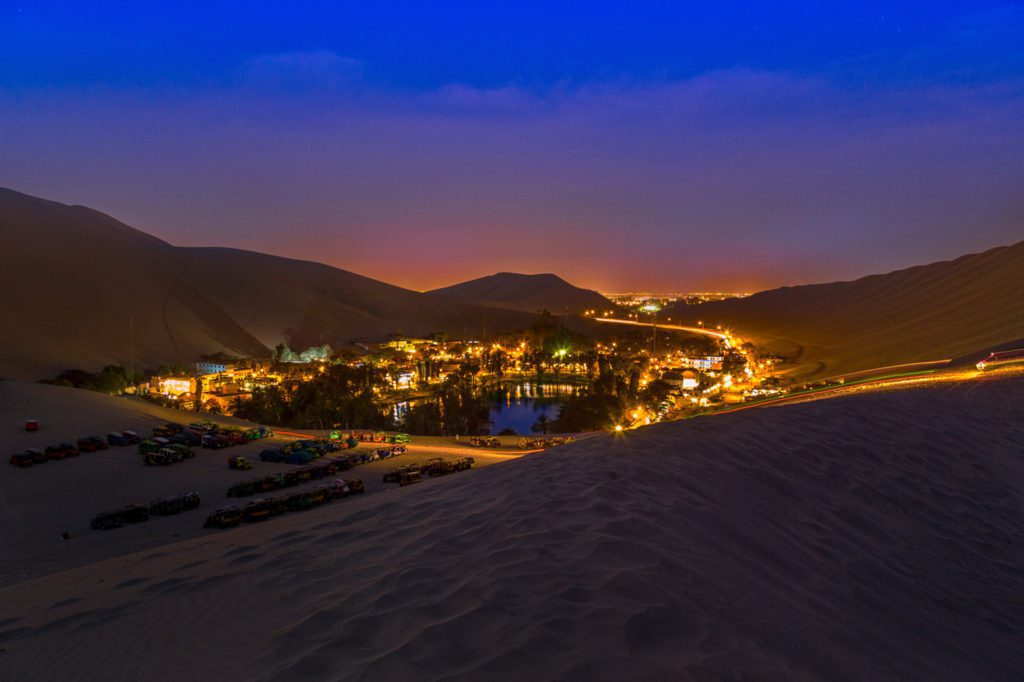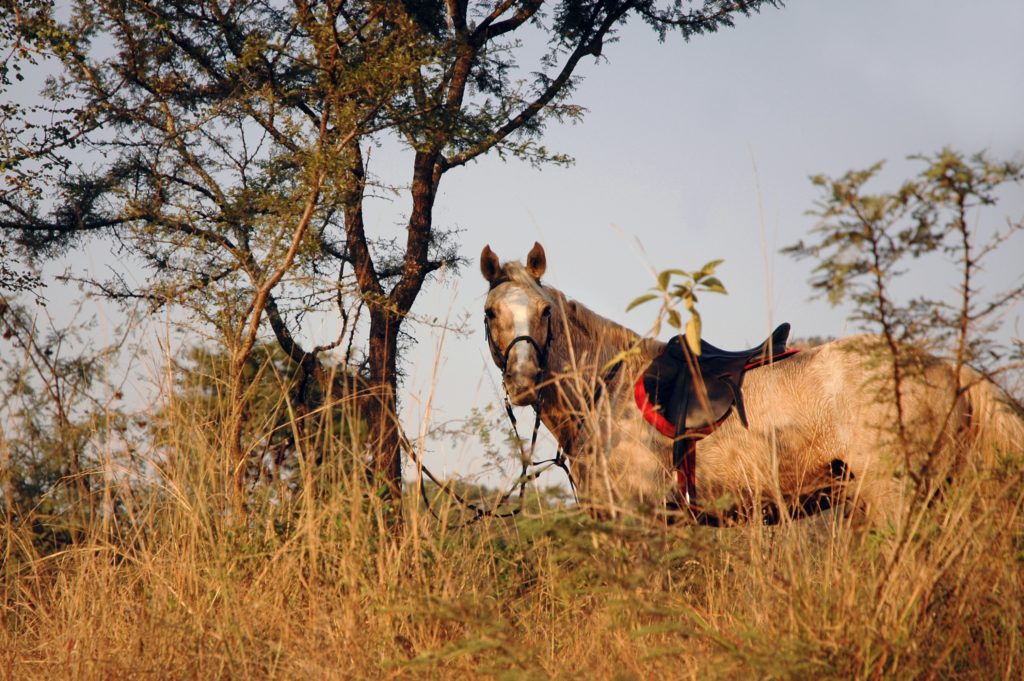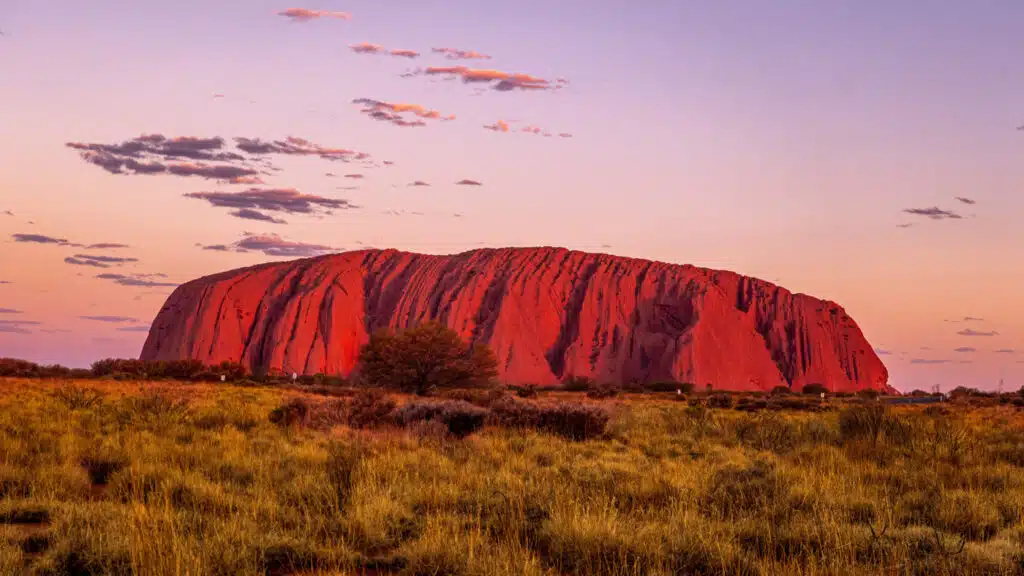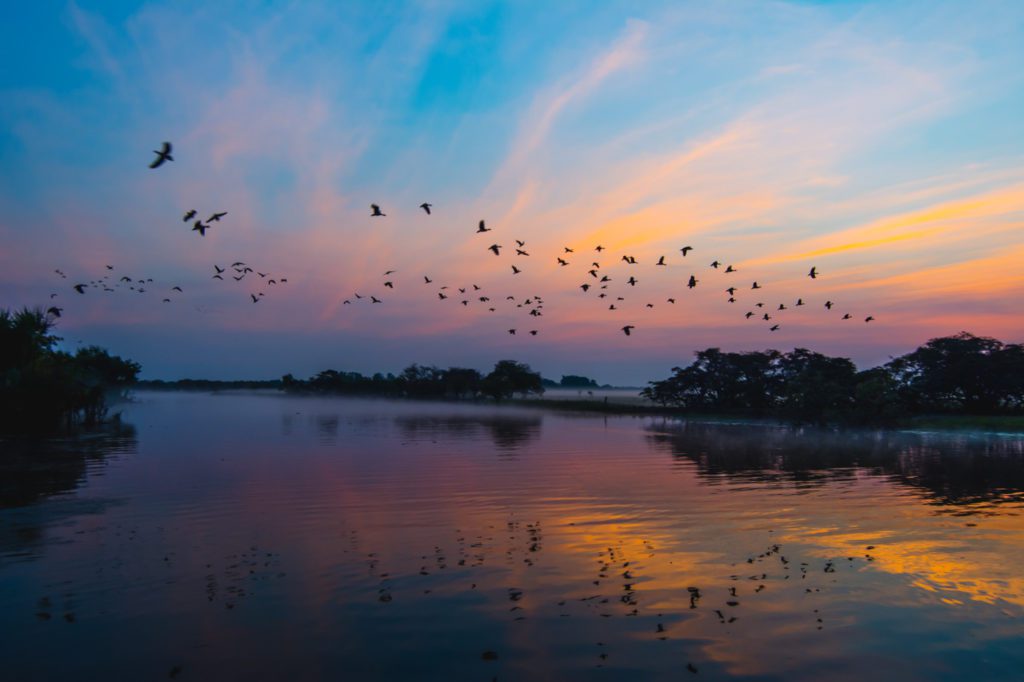FROM SNOW TO SAND
Chile & Argentina
It is the prerogative of Rothschild Safaris to visit every camp, lodge and destination to which we send our clients.
It was to this end that Travel Designer Ruthie Detwiler ventured to Chile and Argentina this month, exploring the alpine regions of Patagonia, the dramatic plains of the Atacama Desert – which recently made National Geographic’s ‘2024 Cool List’ – and the glaciers of the continent’s most southerly reaches.
Between all of this, she had time to saddle up for a horseriding trek, take in a show in Buenos Aires, enjoy a pre-lunch wine tour of the vineyards of Mendoza and witness the imposing torrents of Iguazú Falls.
Though familiar with other regions of South America, this would be a journey of many firsts for Ruthie, and they brought with them a greater appreciation of the boundless adventure, breathtaking terrains and superbly experiential opportunities to be found in Argentina and Chile.
This is Ruthie’s account of her South American odyssey:
Santiago, Chile
My South American journey would take me across the border between Chile and Argentina several times over the coming weeks, as I weaved between the countries’ landmarks, cities and attractions. But it would begin in Chile’s capital – Santiago.
Arriving at my hotel at 7am, I was keen to begin the adventure as quickly as possible. Three hours later, I was sipping wine at the 150-year-old Viña Santa Rita Wine Estate! Perhaps not the most dynamic of beginnings, but touring their vintage cellars and beautiful grounds was a wonderful welcome to South America.
Mendoza Winelands, Argentina
Keeping the theme running, I crossed the border for the first time into Argentina, to the Mendoza wine region. Famous for their Malbec wines, over 800 vineyards have been established here, surrounding a beautiful lake that provides water and power for the region.
Staying at Entre Cielos Wine & Wellness Hotel was a rather special experience. The private cabins are situated amongst the rows of grapes, and walking between the vines to get to my room and sleeping smack dab in the middle of the vineyard made me smile for my entire stay.
The Stunning Iguazú Falls
Being in Argentina, I couldn’t resist one of its most famous landmarks, and took the opportunity to visit Iguazú Falls. Staying at Awasi Iguazú hotel, I was already immersed in the rainforest before my waterfall adventure began. My villa’s outdoor deck and heated pool made me feel completely enveloped in nature. Awasi staff were impressively attentive.
The next day, they excelled once more, organizing an early breakfast and transfer to the falls to avoid the daily crowds. One of the most spectacular waterfalls in the world, Iguazú comprises up to 300 individual falls, depending on seasonal water levels. Taller and wider than Niagara, and broader than Africa’s Victoria Falls, it was incredible to stand next to them, spray wetting my hair and jacket as I stood in awe.
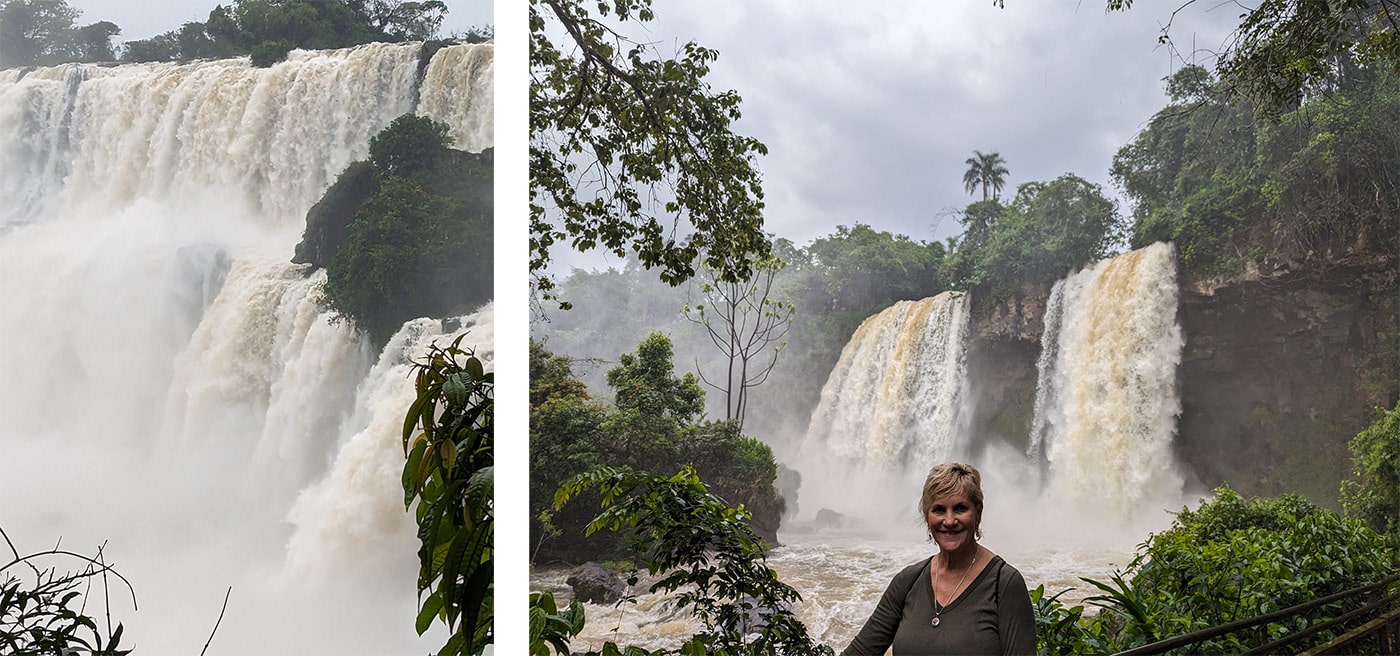
Buenos Aires, Argentina
Leaving the winelands and falls behind, I spent a night in Buenos Aires before heading to Patagonia, Argentina. Tango is to Argentina like Flamenco is to Spain, and I love them both. In the regal elegance of Four Seasons hotel I was treated to extraordinary accommodation and a delicious steak dinner at their acclaimed award-winning restaurant, Elena. Later that evening, I was transferred to Rojo Tango where I enjoyed a spectacular dance performance, with musicians accompanying the precision dancers – ooh la la!

Discovering Patagonia
Patagonia is huge, encompassing almost half of both Chile and Argentina across its 386 thousand square miles (1 million km²). I began the Patagonia chapter of this trip on the Argentinian side.
Staying in the small town of El Chalten, I got my first taste of the wilderness that is Patagonia. El Chalten is only about six blocks in size, but is the gateway to Mount Fitz Roy, one of the most iconic peaks of the many Patagonian mountains. Despite some rain, I decided to venture out, and found a wonderful little trail to a waterfall – just enough to inspire me for the days ahead.
From El Chalten, I took a three-hour road transfer to El Calafate on the border of Parque Nacional los Glaciares in the province of Santa Cruz. The Perito Moreno Glacier is a popular attraction of the region, a two-hour stroll along boardwalks offering incredible views of this glacier, which is in a constant state of flux. Taking a boat trip along the fjord-like coastline provides a much closer perspective of this natural wonder. It was incredible to see these vast ice sheets that creep down the canyons to eventually tumble into the sea.
El Calafate is a vibrant town that has established itself on its tourism industry. Brimming with excellent restaurants, artisan craft shops and larger stores to stock up on supplies before any big treks.
Because of this, guiding is excellent. My charming guide, Tim, was actually German, but his superb English shared his impressive and fascinating knowledge of the region.
The following day, I arrived in Chile’s Puerto Natales after a five-hour road transfer over a mountain pass from El Calafate. First stop was at the incredible Singular Hotel. The history of the hotel goes back over 100 years to the days when it was a meat processing plant. The first afternoon I took a 30-minute bike ride to the small town of Puerto Natales.
The next day I did the signature boat tour offered by the Singular. We started the day early by boat into the fjords. Our first stop was a hike to a glacier, then we made several stops on the way back to see sea lions and waterfalls, returning to land to visit an estancia (ranch) that raises sheep. After a delicious barbecue I went on a beautiful horseback ride for a couple of hours. The views were incredible and the ride was easy through plains and forest. At the estancia they also demonstrated how sheep are sheared. I returned to the hotel at 6:30pm weary but rewarded for my big day out with a heated pool and steam room.
Torres del Paine – the Heart of Patagonia
Departing the luxury of The Singular, it was time to enter the wild, though not without its own charm and comfort. Patagonia Camp is an excellent base camp for those wanting to explore Torres del Paine on foot. The collection of luxurious, cozy yurts is situated in the middle of a native forest on the shores of Lake Toro. Wonderfully appointed and serviced though they are, the yurts give a rustic charm to your stay, with the sounds of nature and the patter of falling leaves or gentle rain ever present.
There are many hikes to choose from in the Torres del Paine National Park. Since I am not an avid hiker and only walk at sea level at home, I chose a hike that falls in between moderate and difficult. There are no easy hikes as the terrain is mostly hills and mountains. I am reasonably fit so I decided on a 10-mile (16km) hike that took seven hours.
I’m not going to lie: it was hard, especially going down! The journey started with a two-hour hike up a moderate incline, then went from even terrain to a downward stretch, leveling out again before a steep climb to another viewpoint. The lodge provides trekking poles and these are a ‘must-have’ for hiking in Torres del Paine.
We had to balance on logs crossing creeks, endure 40-mph (65 kph) winds and some rain too. The viewpoints were the best views I have ever seen, making the grueling climb more than worth it. Then there was the last stretch of going straight down. At some points the path clung to a cliff side only three feet (1m) wide! It was scary, but we stayed focused, one step at a time, and ‘no stopping and looking around’ said the guide.
At the bottom, the van was waiting for us with cold drinks and snacks. Exhausting and, at times, nail-biting though it was, I would do it again for the views alone!
My next stop in Torres del Paine was at another estancia – the largest one in Chile at approximately 250,000 acres. On a wonderful horseback ride, I channeled my inner huaso (the traditional cowboys of Chilean Patagonia, or gaucho in Argentina) and was captivated by the inescapable views along the way, but challenged with equally inescapable strong winds and even some hail. I stayed strong on my ever-so-gentle horse and had the ride of my life. I loved the scenery and learning about the gaucho way of life. We even took a rest at one of the gaucho resting cabins for a coffee and a break from the wind. I love horseback riding and this was by far my favorite ride. It was so authentic with rewarding views once again.
If trekking or horseback riding isn’t for you, there are safaris to be enjoyed by vehicle that make stops at the most interesting viewpoints. Torres del Paine has something for everyone and the best views you can ever imagine.
Lake District, Chile
Departing the mountains for the lakes, I took the two-hour flight to Puerto Montt in Chile’s Lake District.
Taking advantage of this wonderfully picturesque region, my two-night stay at AWA Hotel was packed with activities.
My tour guide, Rafael, has been guiding in the Lake District for 20 years and was the best! He was very knowledgeable on all things, especially flora and fauna. Despite it raining every day, we managed some good tours and he was a great conversationalist, making every excursion entertaining, no matter how soggy we got.
The first day it was pouring rain, so we opted for the Termas del Sol hot springs. The hot springs include seven pools of various temperatures, used for therapeutic treatments and pure relaxation. After a light lunch at the restaurant, we returned to the hotel, passing through a small fishing village on the way back. On non-rainy days Rafael informed me that a hike can be done to a giant swing with views of the volcanoes, but unfortunately I would have to miss out, with the rain continuing to fall.
On my second day at AWA, Rafael continued the aquatic theme with a tour of beautiful nearby waterfalls that we reached with a short and pleasant walk. Returning to AWA for lunch, Rafael suggested an afternoon kayaking on a nearby lagoon. The lovely two-hour kayak was incredibly tranquil and Rafael was wonderfully informative throughout. In a scene that was charmingly reminiscent of my African adventures, our kayak ended with sundowners on the lagoon’s bank, taking in my spectacular surroundings with drink in hand and a beaming smile on my face.
On the morning of my departure I took a small walk into the forest with Rafael. He told me that it was a shame the weather had been so unfavorable, and that, on drier days, guests can hike to nearby volcanoes or go whitewater rafting. Maybe next time…
From the distinctly watery Lake District, my next stop took me to one of the driest places on the planet: the Atacama Desert.
Into the Atacama
My home for the next three days was Nayara Alto Atacama, a stunning hotel that seems to melt into its surroundings, nestled in the shadow of the surrounding terracotta hills. My lovely suite had views across a scenic cactus garden, the hotel lying in a beautiful location just two miles (3km) from the nearest town of San Pedro.
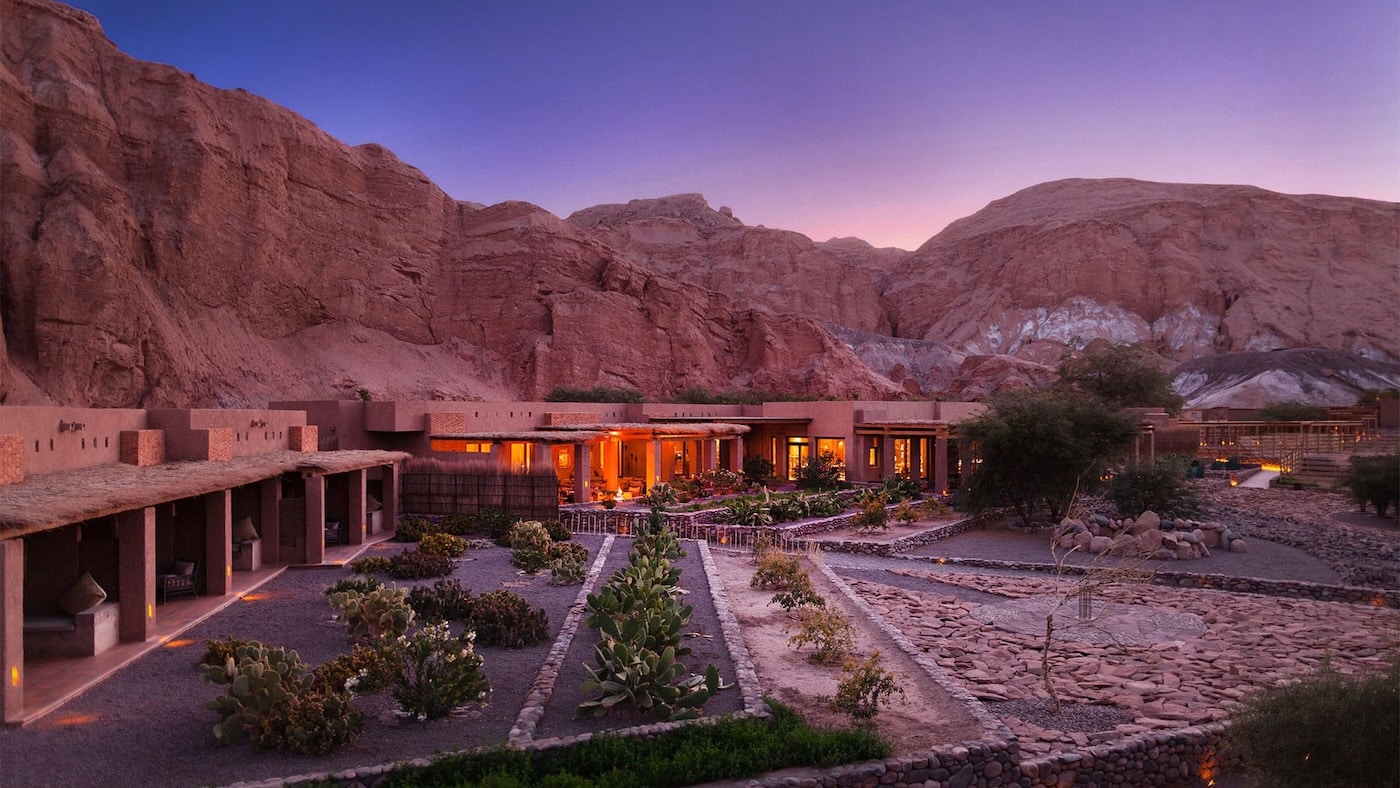
The first excursion of my visit was to the region’s salt pans and flamingo lagoon, a little over an hour from the hotel. A short walking path takes you on a 45-minute route around the lagoon, where three species of flamingos – the Andean, Patagonia and James flamingos – can be seen feeding on brine shrimp and flying in the sky above. This is the third largest salt pan in the world, and is absolutely stunning.
That evening we took a sunset tour to the Salta Mountains. The mountains are the most interesting scenery, likened to Mars, my guide informing me that many movies have been filmed here for this reason.
Brine lagoons, salt pans and Martian landscapes aren’t the only extraordinary sights in the Atacama. Departing at 5:30am on a stormy day, my excellent guide and I took a two-hour drive into the Andes Mountains. I seemed to have brought the rain with me, and though we spent the morning viewing some incredible active geysers, cloud cover prevented the view to the distant volcanoes. Normally, guests would be offered a light breakfast here, but the inclement weather made us retreat to a rest area further down the mountain. On the descent it even started snowing – very unusual for this time of year, and proof again that I was fated to have bad weather wherever I went! Eggs, toast, fruit and coffee were served at the rest area, and we took a brief hike through a valley filled with cacti before returning to the hotel.
My afternoon tour to Rainbow Valley was unfortunately canceled due to rain, in the Atacama desert, one of the driest places on earth! It was a very unusual situation, even for the guides, but I chose to take a self-guided hike to Pukará de Quitor a short distance from the hotel. The hike is uphill, lasting for about one hour on wide, easy-to-follow trails with magnificent scenery all around and views over the town of San Pedro Town. Pukará de Quitor is a remarkable Atacameño village fort from the 12th century, its stone walls and archways incredibly preserved and carefully restored in recent decades. An easy walk from the hotel, I highly recommend this stroll back in time.
A Return to Santiago
Departing the desert for the coast, the next destination on my Chilean exploration was a return to the capital of Santiago. Rather than migrate to the surrounding countryside and winelands, I decided to explore the city a bit more thoroughly. With my knowledgeable guide Jaime, I took a two-hour walking tour, which was a great way to see the important historical points in downtown Santiago. Being a Sunday afternoon, the streets were relatively quiet and at times we felt like the only ones in the city. Waving goodbye, Jaime left me to enjoy lunch in the Lastarria neighborhood, sampling delicious local dishes before taking a ten-minute stroll back to my hotel.
The following day, my curiosity took me to Valparaiso. Uber is widely available in Santiago and an affordable and reliable way to get around. Though the drive was very scenic, the destination was somewhat disappointing, and Valparaiso is Chile’s equivalent of Tijuana Mexico. Buildings are adorned with interesting and stunning murals and some areas are quite picturesque, but unfortunately this is overshadowed by over-commercialization, heavy traffic and dilapidation.
One Last Drop of Wine!
Not to let this dampen my day, I grabbed another Uber to take me to Casablanca’s Rosario Valley, home to Matetic organic vineyard. I loved this place so much – just wow and fabulous!
The vineyard’s La Casona Hotel was originally a hacienda 200 years ago and has been converted into a very beautiful 10-room hotel surrounded by astonishing gardens. Each room has a front and back door that open to either the gardens or the expansive vineyard. The rooms are large and furnished to evoke the nostalgia of a centuries old mansion. Being south of the equator, it’s spring in November and roses were in full bloom along with many other flowers, their divine fragrance permeating the entire property. My introduction to this beautiful estate started with a five-course lunch paired with four palate-pleasing Matetic wines, each one explained thoroughly by the talented sommelier.
Matetic Vineyard covers 25,000 acres of rolling hills and a range of guided tours are available. I was joined by my guide, Alexander, for the day and took a combination excursion, spending 20 minutes on a bicycle before taking to the trails on foot for a couple of hours. At only 29 years of age, Alexander’s knowledge of farming and winecraft was exceptional, informing me that Matetic is a biodynamic vineyard which means they grow organically with no pesticide or GMOs, creating their own fertilizer from their food and livestock waste. The tour was extremely interesting to me and lasted a little over three hours in total, concluding with a visit to the wine cellar and a well-earned tasting!
With Casablanca Valley’s close proximity to the capital and international airport, I highly recommend Matetic and La Casona as a middle destination before an onward journey to Patagonia and Argentina.
I woke the following morning in the dark, departing my hotel at 3:30am to begin my wending journey homeward. It has been an extraordinary, illuminating and packed four weeks of adventure that has taken me by surprise on countless occasions. I didn’t really have many expectations when planning my adventure, but any that I may have had were far exceeded time and time again.
When planning my Argentina and Chile trip, I had a vision of what to expect, but the beauty, intrigue and adventure around every turn far exceeded my expectations. The people I met and landscapes I explored have left a lasting impression, one that will certainly see me returning one day. If you’re a lover of the outdoors, enjoy fine wines and gastronomy or are searching for an escape into disparate wildernesses, I can’t recommend these countries highly enough.

